Heroes of Rodeiro – Past and Present
Wednesday, July 30, 2014
Nestled in the foothills of Monte Faro, on the eastern edge of the province of Pontevedra in Galicia, is the small town of Rodeiro. It’s the type of sleepy, rural backwater that travellers pass through on their way to somewhere else. It lies in the Val de Camba (Vale of Camba) on the Camino Invierno (winter route of the Camino de Santiago). You could be forgiven for thinking that this is its only claim to fame but dig a little deeper and Rodeiro offers visitors a warm welcome, beautiful architecture, and a great sense of pride in its local heroes; past and present.
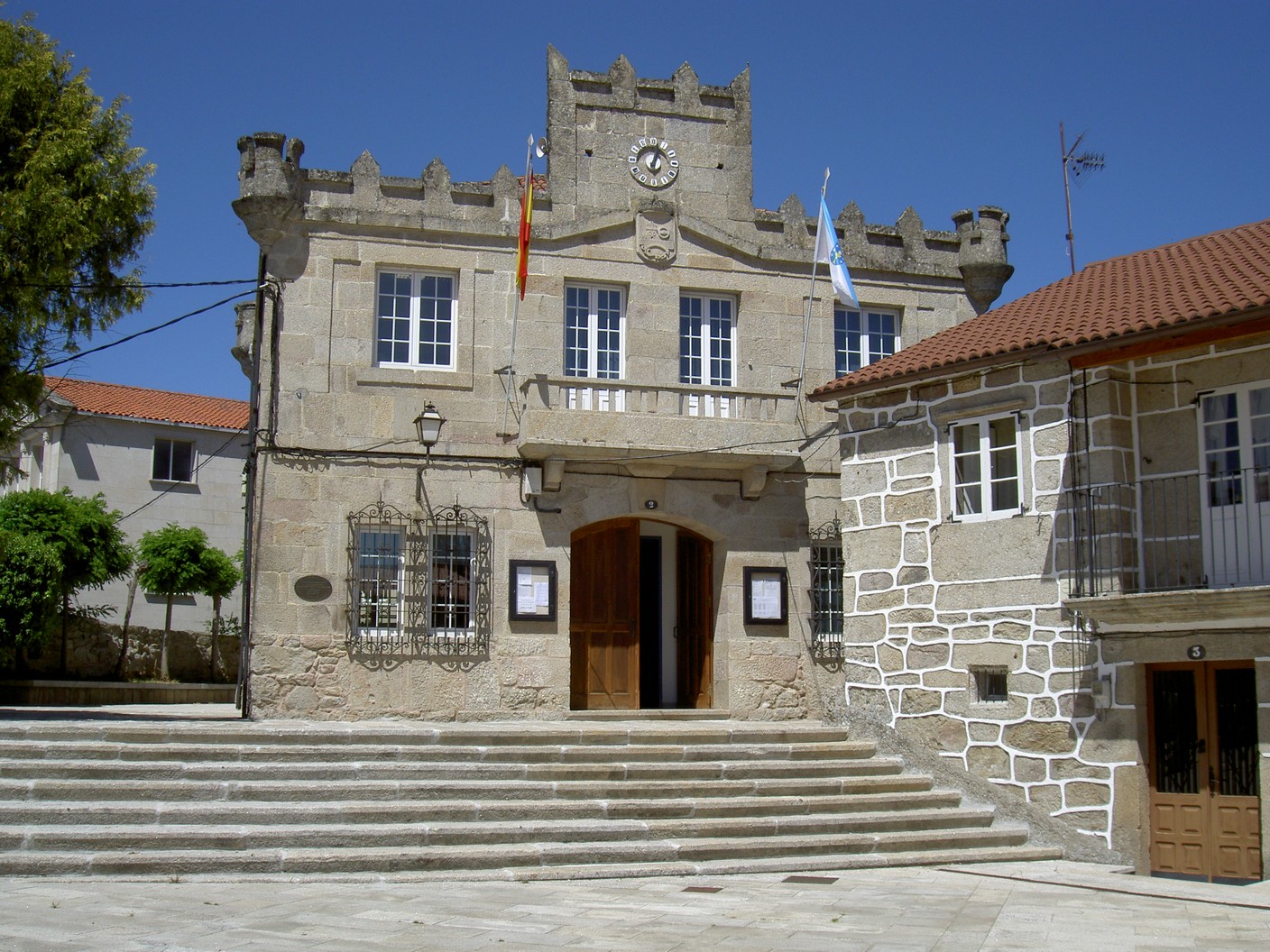
The architectural jewel in Rodeiro’s crown is undoubtedly the town hall. It’s situated on the Praza Foi, just off the main street. Although the building is not of major historical significance, it must surely be one of the prettiest ayuntamientos in the whole of Spain.
The town developed around the crossing of two ancient roads. Nowadays, the crossroad has been superseded by a large roundabout. Centrepiece of this circular island is an impressive fountain featuring an intricately carved sculpture of a carro wheel (a traditional two wheeled Galician cart).

Adjacent to this is another marble sculpture. Chiselled from a single piece of local granite, it depicts an elderly couple dressed in local attire. It celebrates the contribution made by those of the 3rd age to the continuing prosperity of the area. The local economy relies heavily on agriculture and in particular milk production. In common with many rural towns in Galicia, Rodeiro has an ageing population. This statue seeks to celebrate the sacrifice of ordinary town’s folk whose actions have left a legacy for future generations. Some were lucky and remained in the area to work; others became economic migrants to cities within Spain or in many cases, even further afield.
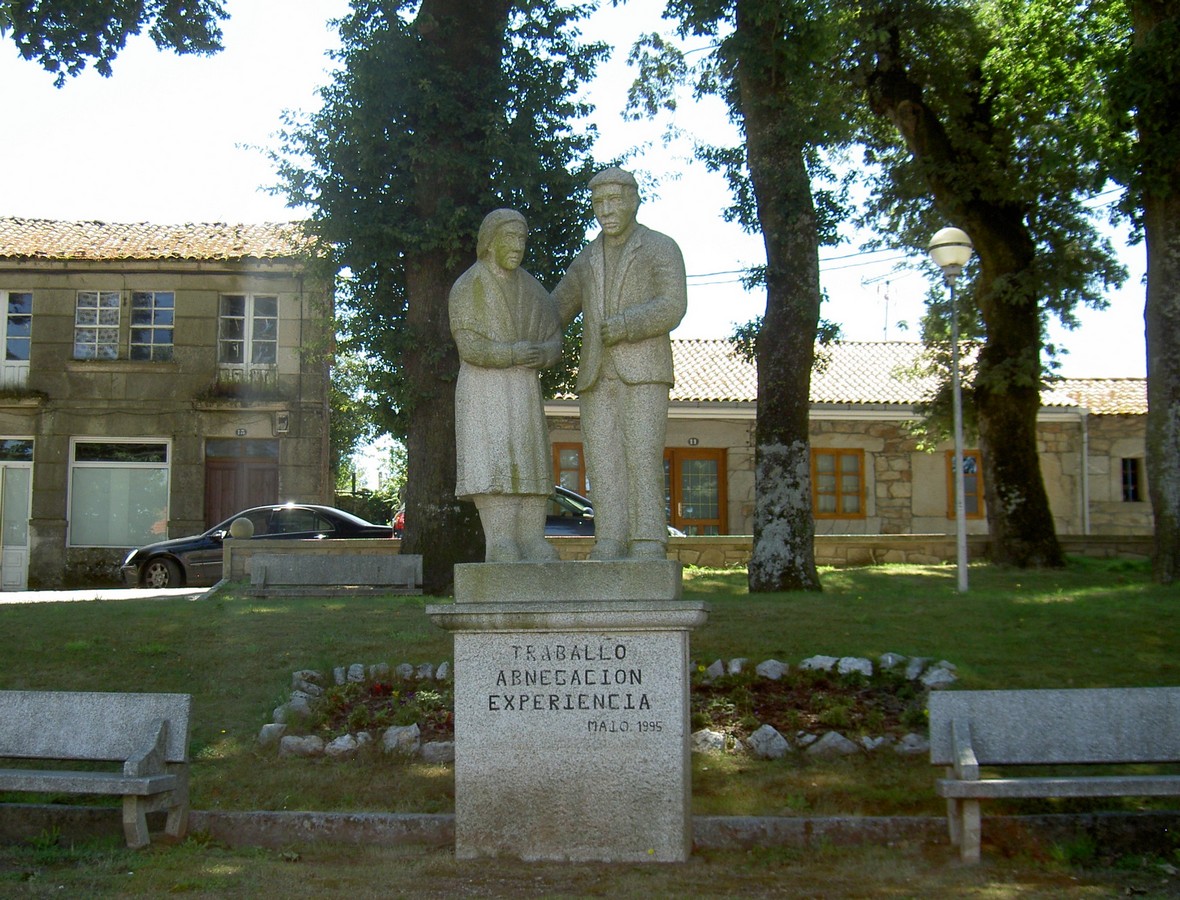
Across from this stands a fitting memorial to the town’s most famous hero: the aviator Gumersindo Areán Rodriguez. He was born in the nearby village of Pedroso in January 1898. The son of farm labourers, he went on to become one of the most celebrated Republican pilots of the Spanish civil war. Forced into exile in 1939, he was reunited with his family in 1942 when they fled to Mexico. He remained there until his death in 1974.
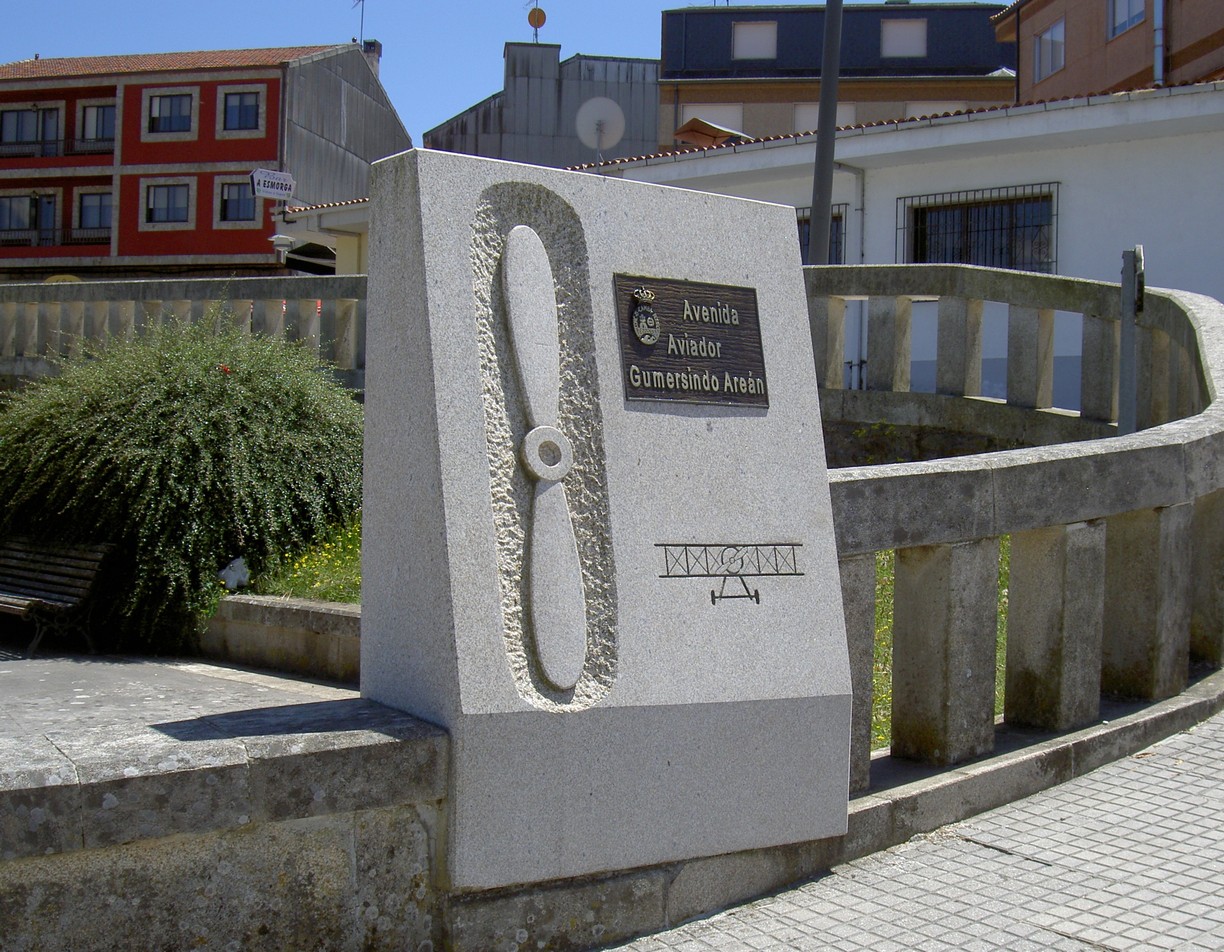
Rodeiro clearly feels a historic link to this unsettled period in Spanish history: a point emphasised by the name of our lunchtime restaurant, Meson O’ Guerra (The War). Despite its name the owners of this charming establishment were attentive and friendly.
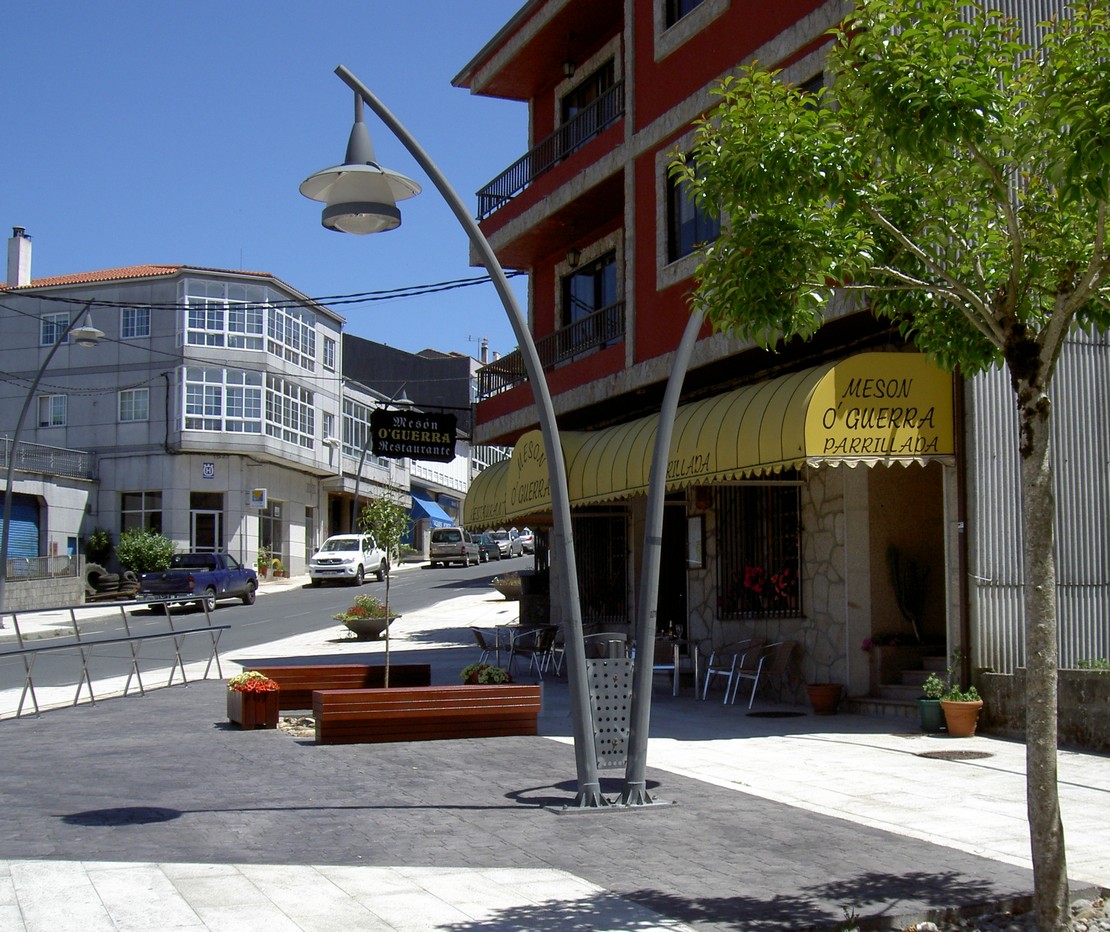
We started lunch with homemade Spanish tortilla. I followed this with Merluza a la galego: two moist steaks of hake served with boiled potatoes and drizzled with an oily pimiento sauce. Melanie opted for Lomo a la plancha, thinly sliced steaks of grilled pork served with French fries. We washed it down with a bottle of Viña Costeira: an excellent white from the Ribeiro region in Ourense.
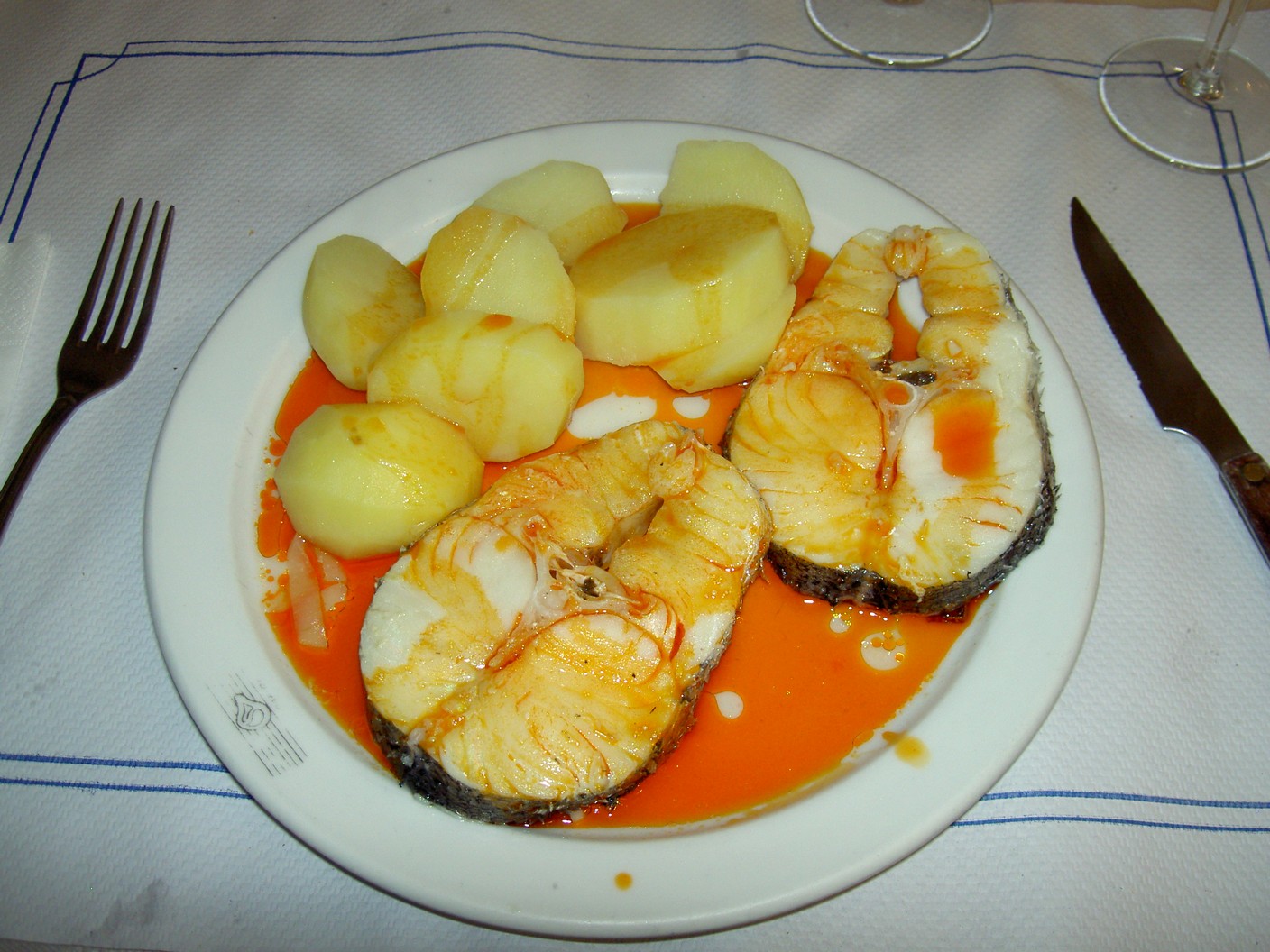
The next time your journey takes you through Rodeiro, set off a little early and take time out to explore this small town with a big heart.
Vine Watch – week 17
There are many drawbacks to working two vineyards in two different villages with two different micro-climates but one very important advantage. When one vineyard is decimated by black rot, there’s a good chance that the other will survive unscathed.
Thankfully, this has been the case this year. Our second vineyard, just across the valley in Vilamelle, is in good condition. There’s a little bit of insect activity and a small amount of fungal disease but nothing more than I would expect at this time of year. Harvest quantities are likely to be lower than last year but barring a disaster, we will still be making wine in a few months time.
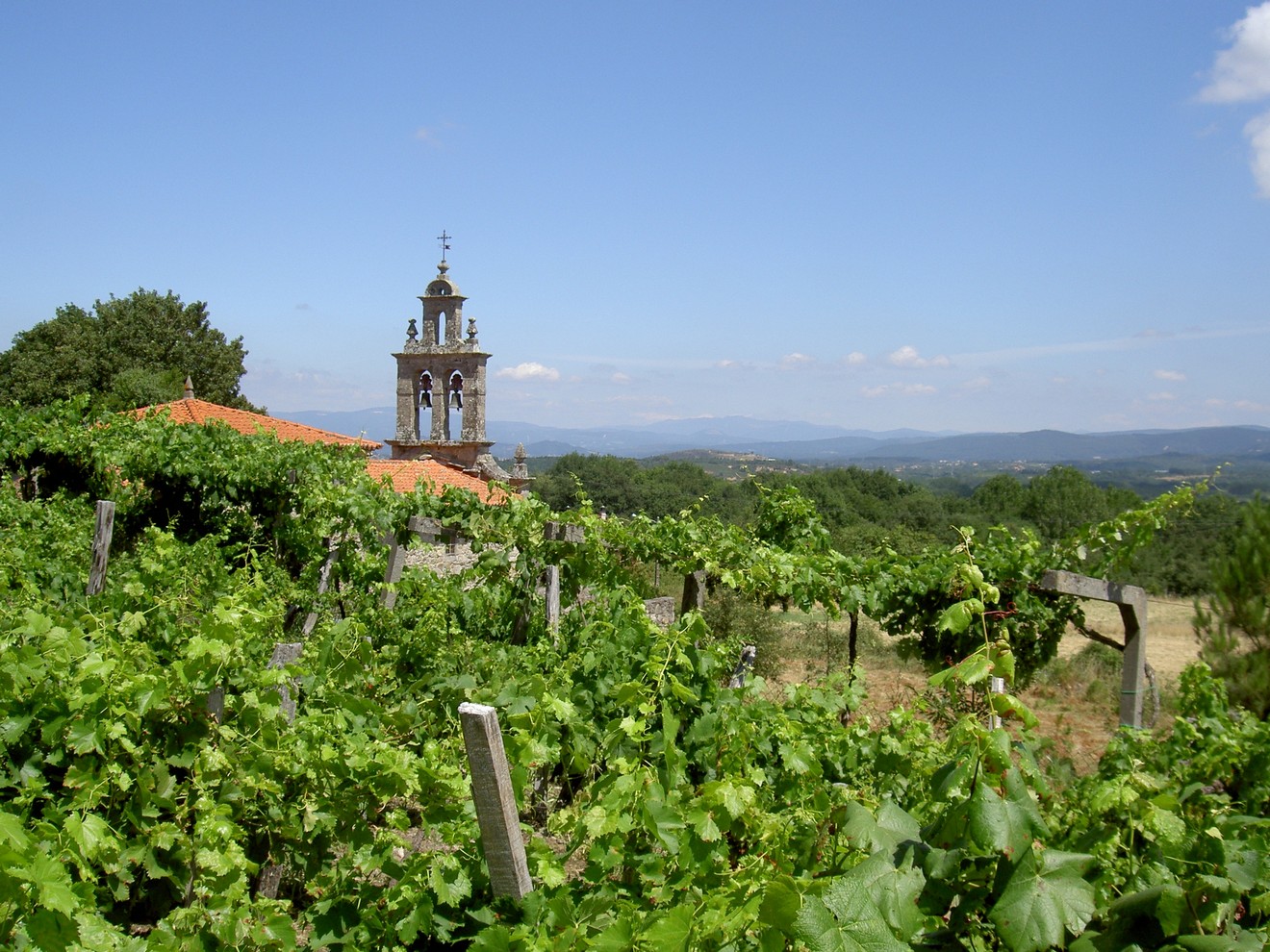
Copyright © 2014 Craig Briggs
*************************************************************************
Craig and Melanie own and operate a luxury farmhouse rental property called Campo Verde. To find out more about a stay at Campo Verde and Galicia in general, visit their website getaway-galicia
Craig’s book, Journey To A Dream, is available exclusively from Amazon, to purchase your copy click here for your national Amazon store.
Find out more about Craig, and Galicia or look him up on Facebook
 0
Like
Published at 12:28 PM Comments (0)
0
Like
Published at 12:28 PM Comments (0)
Black Death – A Modern Plague
Wednesday, July 23, 2014
The Ribeira Sacra is a Spanish Denominación de Origen (DO) and one of the most difficult places on the planet to harvest grapes. This relatively small and little known wine producing region is located in the south of Lugo province and the north of the province of Ourense in Galicia, Spain.
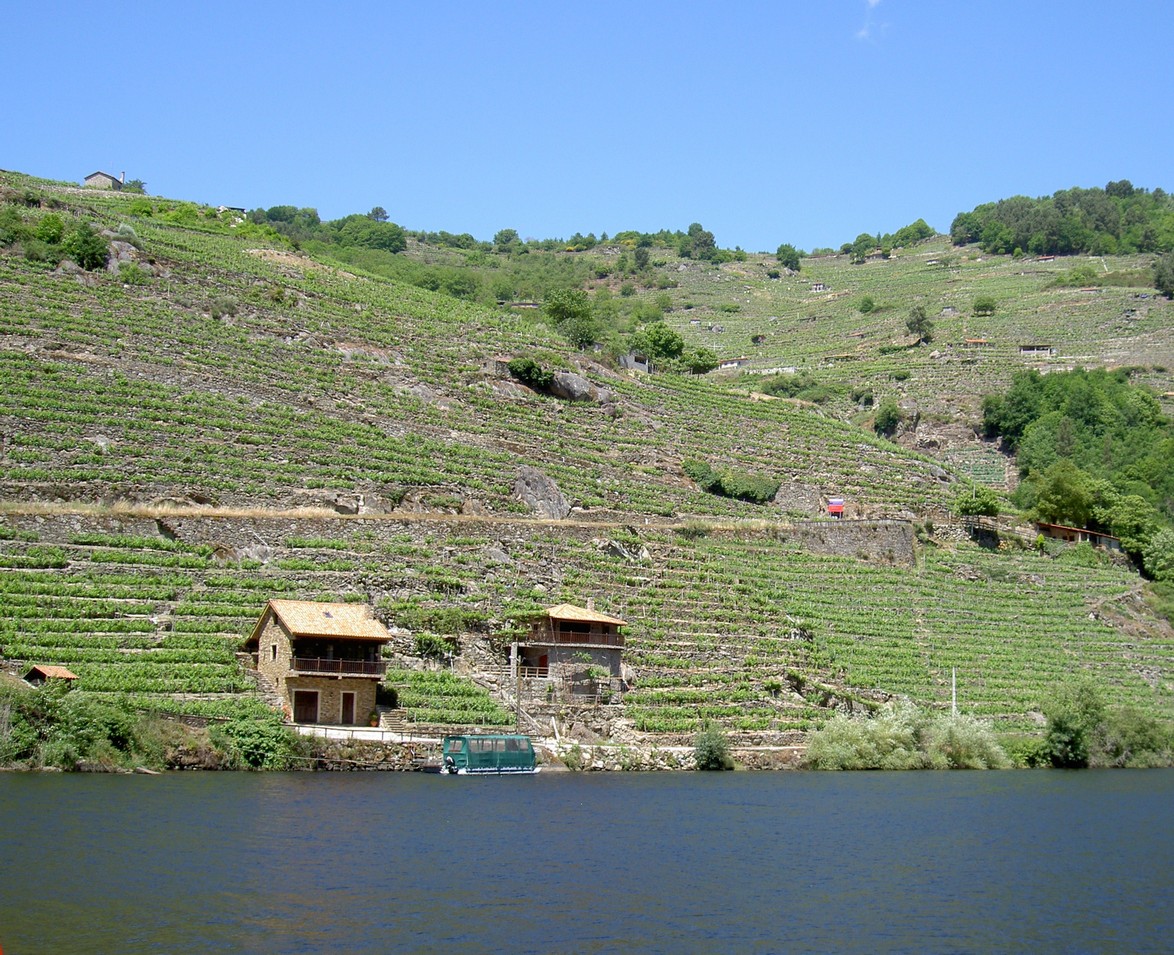
The steep sided valleys of the river Sil and river Miño provide growers with an ideal micro-climate and produces grapes with intense flavours and naturally high sugar levels. The vines are grown on narrow terraces or bancadas and rise from the banks of the rivers to over a thousand feet. Like a giant staircase, the terraces hug the contours of the valley. Mechanisation on these steep, narrow terraces is impossible and some vineyards are only accessible by boat. It’s said that six labourers and one tractor, working in the gently undulating vineyards of Castile and La Mancha, can harvest more grapes than three thousand workers in the Ribeira Sacra.

Within this unique wine growing region there are many other enthusiastic amateurs producing fresh, juicy reds from the area’s most abundant grape variety, Mencia. I’m proud to count myself among its number.
The difficulties of working the steep river slopes are offset against the benefits of the micro-climate that provide ideal conditions for this northerly, more temperate corner of Spain. For those of us working vineyards outside this microcosm of weather, there are other problems to overcome.
Work in my vineyard, on the flat flood plains of the river Cabe, starts much later in the year than most. The risk of late frosts delay pruning until the new buds are almost ready to burst into life. This year, I started work in the second half of March: pruning the vines and tilling the vineyard. Mother Nature worked her magic, providing the perfect conditions for a healthy start. Buds swelled in the warm sunshine and mild nights kept Jack Frost at bay.
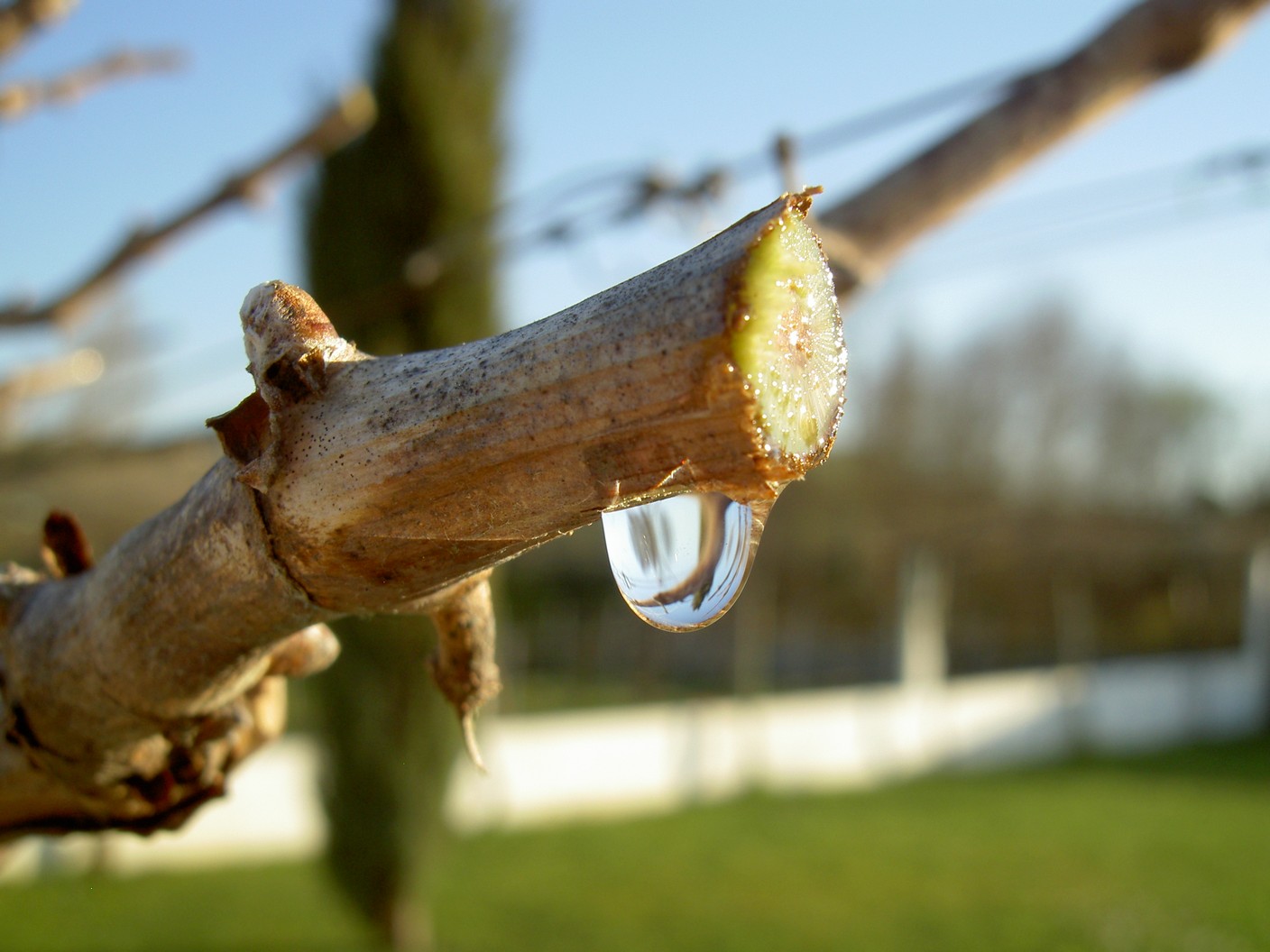
By the time of the Sober wine fiesta, in mid-April, the buds had burst and young leaves basked in warm Spring sunlight. By the end of the month, tiny bunches of grapes were preparing to flower. May brought an explosion of growth. The young canes grew from less than an inch long to over three foot. Regular spraying kept the vineyard free of pests and fungal diseases at bay. By the beginning of June, delicate flowers blanketed the young grapes: a brief moment of beauty blown away in the first strong breeze.
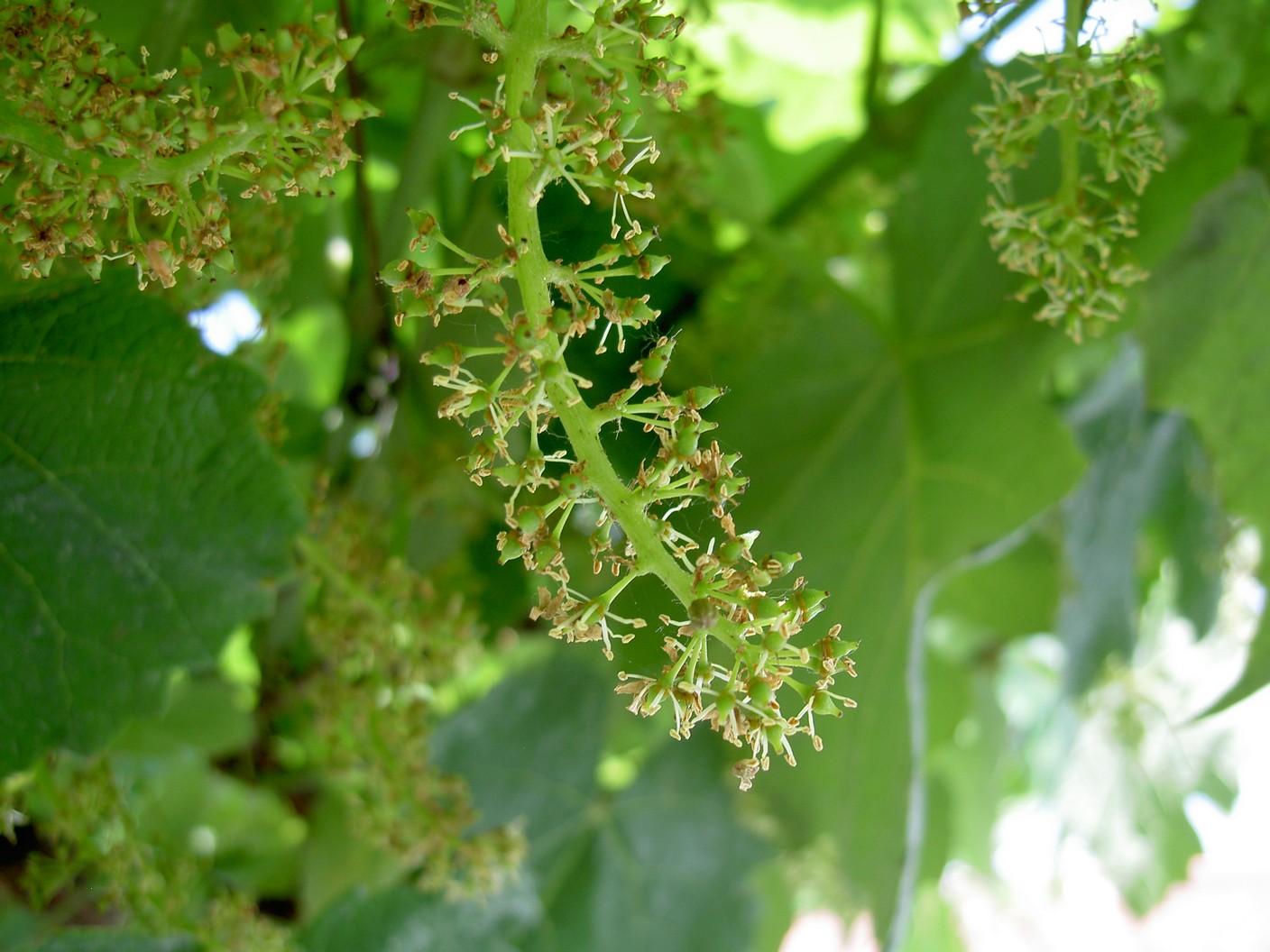
The long road to maturity could now begin. A period of inclement weather was countered by more spraying. Mid-July and all was well but then disaster struck: a vintner’s worst nightmare – black rot.
Like the Black Death of the fourteenth century, black rot attacks without conscience. Plump and healthy grapes are reduced to shrivelled black berries. A spell of wet weather compounded the problem. By the time I was able to spray them again, the damage had been done.
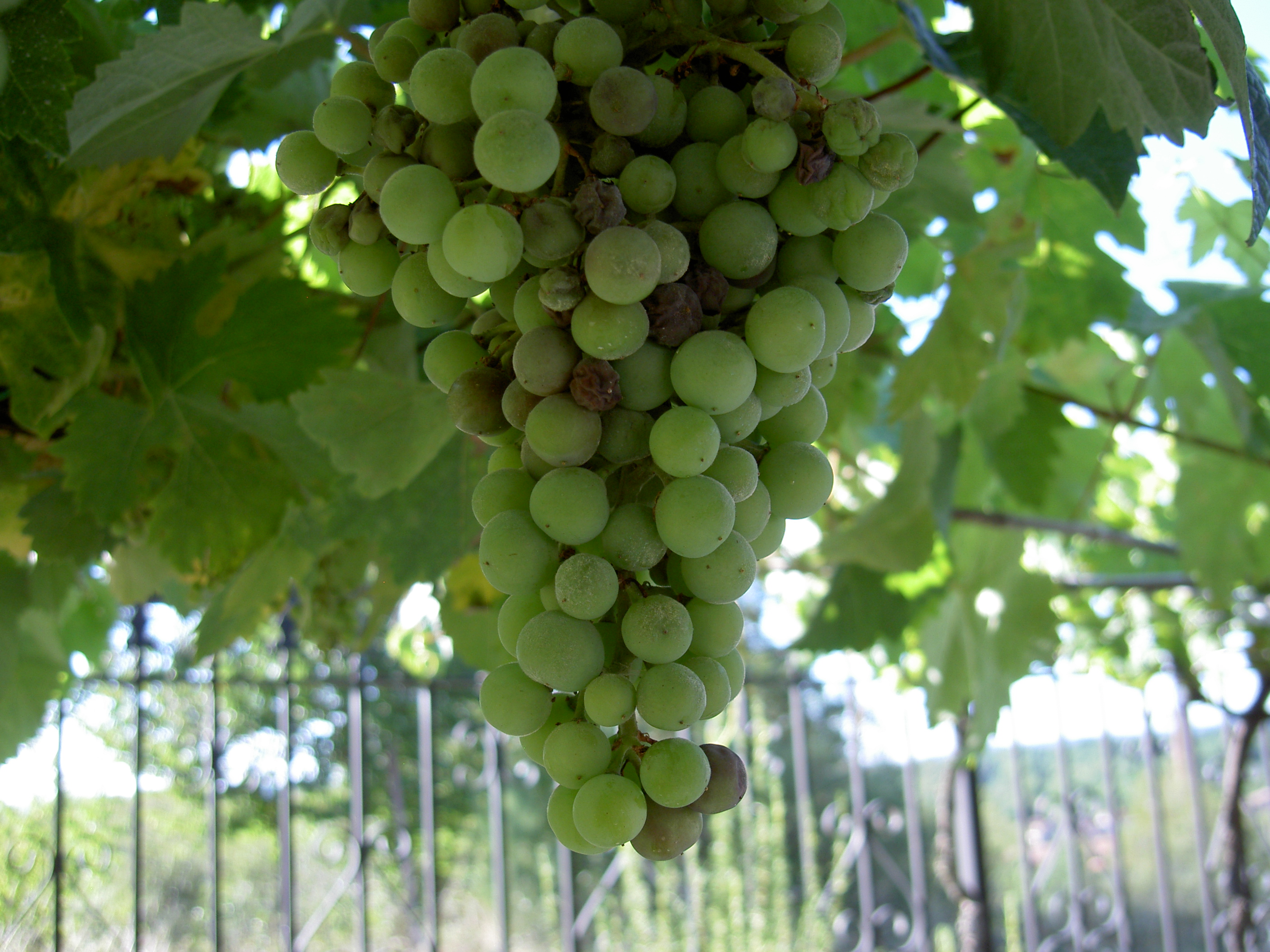
From now until harvest time, each infected grape will have to be hand-plucked from every developing bunch: a momentous task.
Now is the time to pull a cork and raise a glass. Not, as you might think, to drown my sorrows and wallow in self-pity. No, this is the time to savour the unique and exquisite flavours of Ribeira Sacra wine and motivate myself to stay the course and see the job through.
Copyright © 2014 Craig Briggs
*************************************************************************
Craig and Melanie own and operate a luxury farmhouse rental property called Campo Verde. To find out more about a stay at Campo Verde and Galicia in general, visit their website getaway-galicia
Craig’s book, Journey To A Dream, is available exclusively from Amazon, to purchase your copy click here for your national Amazon store.
Find out more about Craig, and Galicia or look him up on Facebook
 0
Like
Published at 3:15 PM Comments (0)
0
Like
Published at 3:15 PM Comments (0)
Revisiting an Old Friend
Wednesday, July 16, 2014
The name Regina Viarum might ring a few bells for some. You could be thinking of the Appian Way in Italy: the ancient Roman road connecting the capital with the Mediterranean port of Brundisium, but no. On this occasion I’m referring to one of the most prestigious wineries (bodegas) in the Ribeira Sacra. Let me refresh your memory.
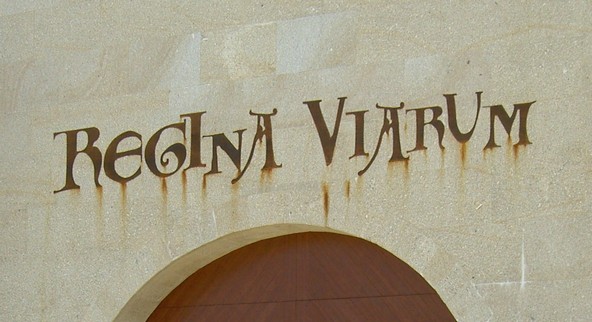
“Perched majestically on the edge of the river Sil gorge is the Regina Viarum winery. Even the name conjures up images of Imperial Roman legions marching towards Rome with their precious cargo of fruity red wines.”
This short extract is taken from my book, ‘Journey To A Dream’.
Like a magician’s illusion, the last twelve years have disappeared. All that remains are amazing memories. Since our previous visit to the winery, the adjacent village of Doade has transformed itself into a bustling tourist centre while managing to retain its rural charm.
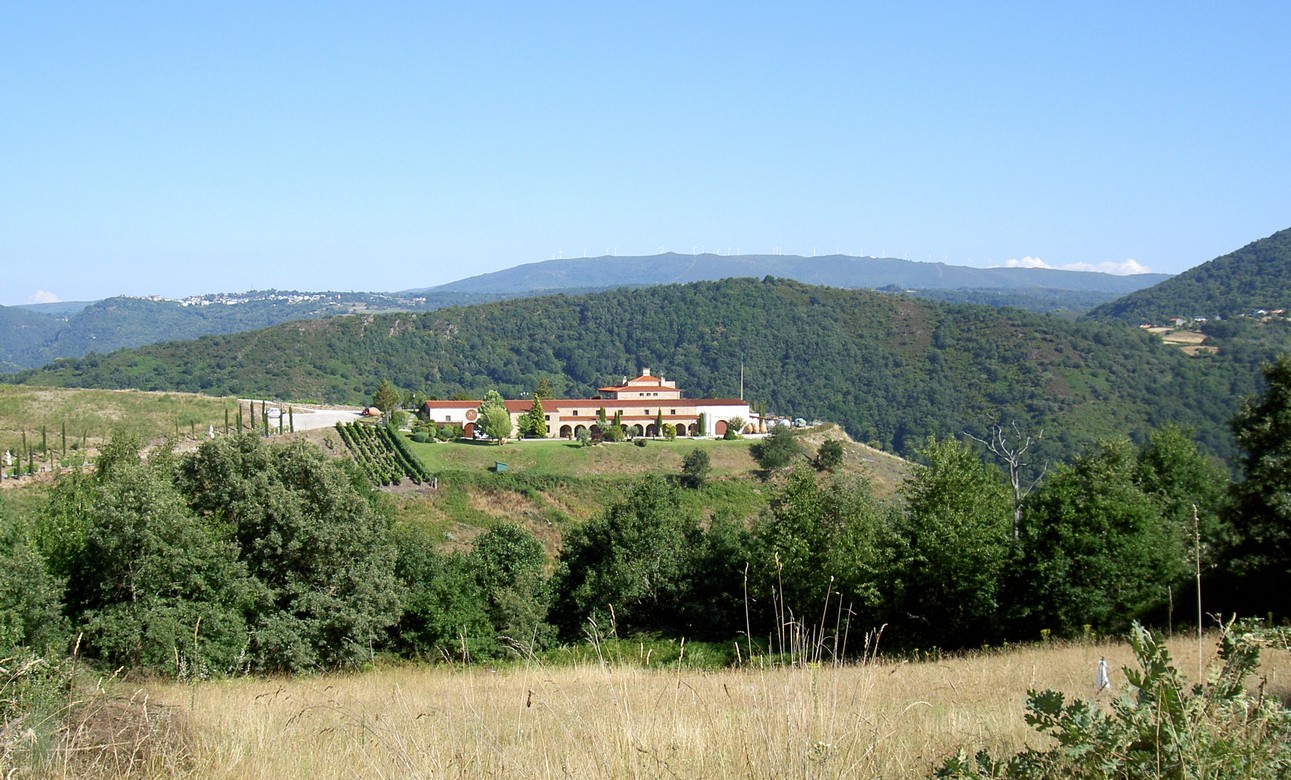
Creeping slowly through the village, we caught the first glimpse of our destination. Perched on a hilltop and built in the style of a palatial Roman villa, it commands an enviable position overlooking the terraced slopes of the river Sil.
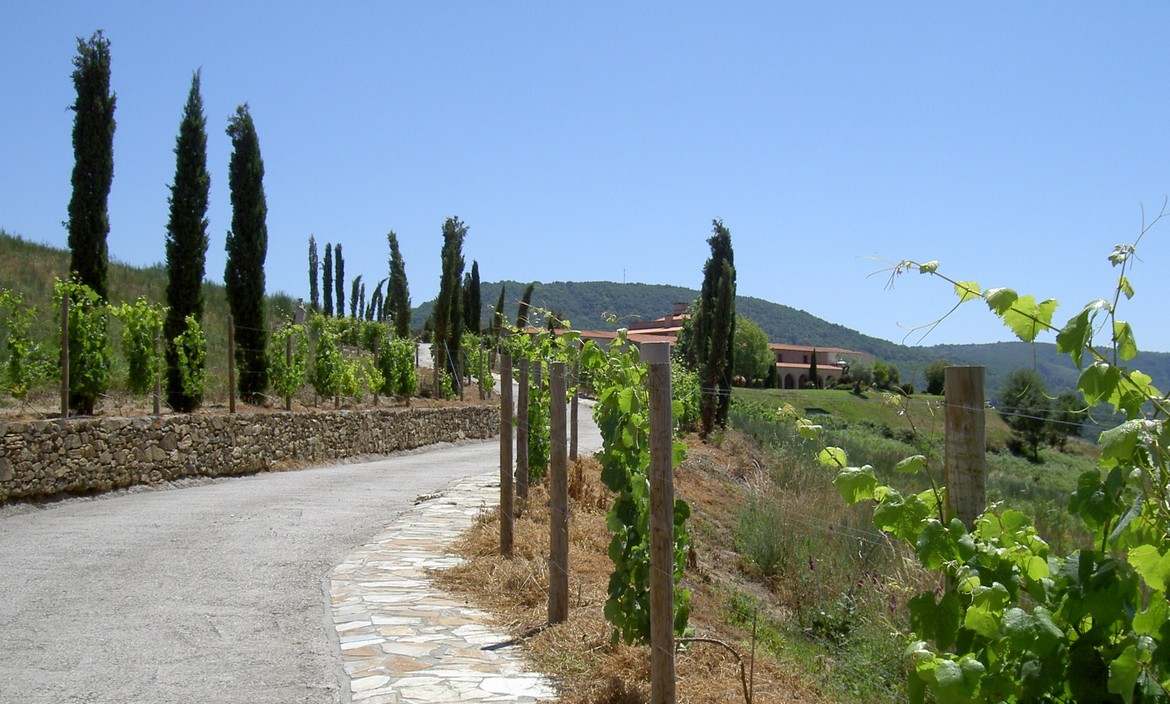
A long, meandering driveway takes visitors from the road to their destination. Both sides are lined with young grapevines and tall, spindly cypress trees. Statues of the Gods greeted our approach but nothing prepares visitors for the panorama awaiting them from the car park. I often see lists in magazines and periodicals with titles such as, ‘The 10 most spectacular views in the world’ or ‘Ten must-see places before you die’. I’m sure they are all wonderful locations but in my experience, the landscape from here is unsurpassable.
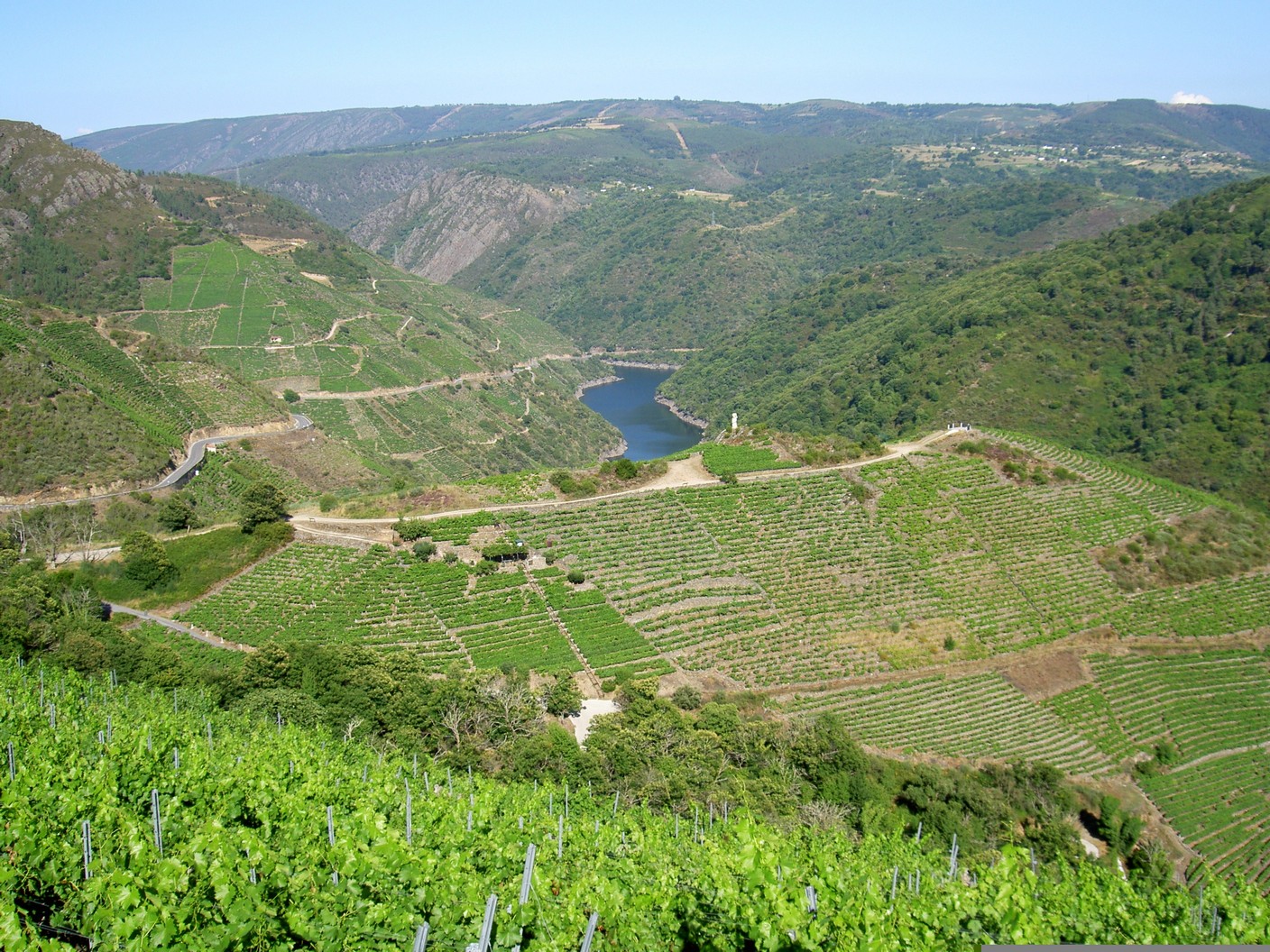
Having feasted on the view, we entered the winery. Twelve years on from our last visit, the sterilized feel of a newly built property has been replaced with a more lived-in ambience. Other than that, the place remains very much the same. We joined a small party of tourists on a wine tasting tour. It began in the bodega and finished upstairs in the tasting suite.

By the time we hopped back in the car the thermostat had hit 32 degrees and the time had ticked round to 2:10.
‘Shall we stop in the village for lunch?’ I asked.
When we’d passed through the village earlier I’d noticed a new bar, Taperia a Ribeira (Doade 55, Sober, Lugo +34 982152495). It seemed as good a place as any to stop. Wrought iron gates lead into a charming courtyard. Leaves from a sprawling grapevine provided natural shade and ripening grapes dangled from overhead trellising.
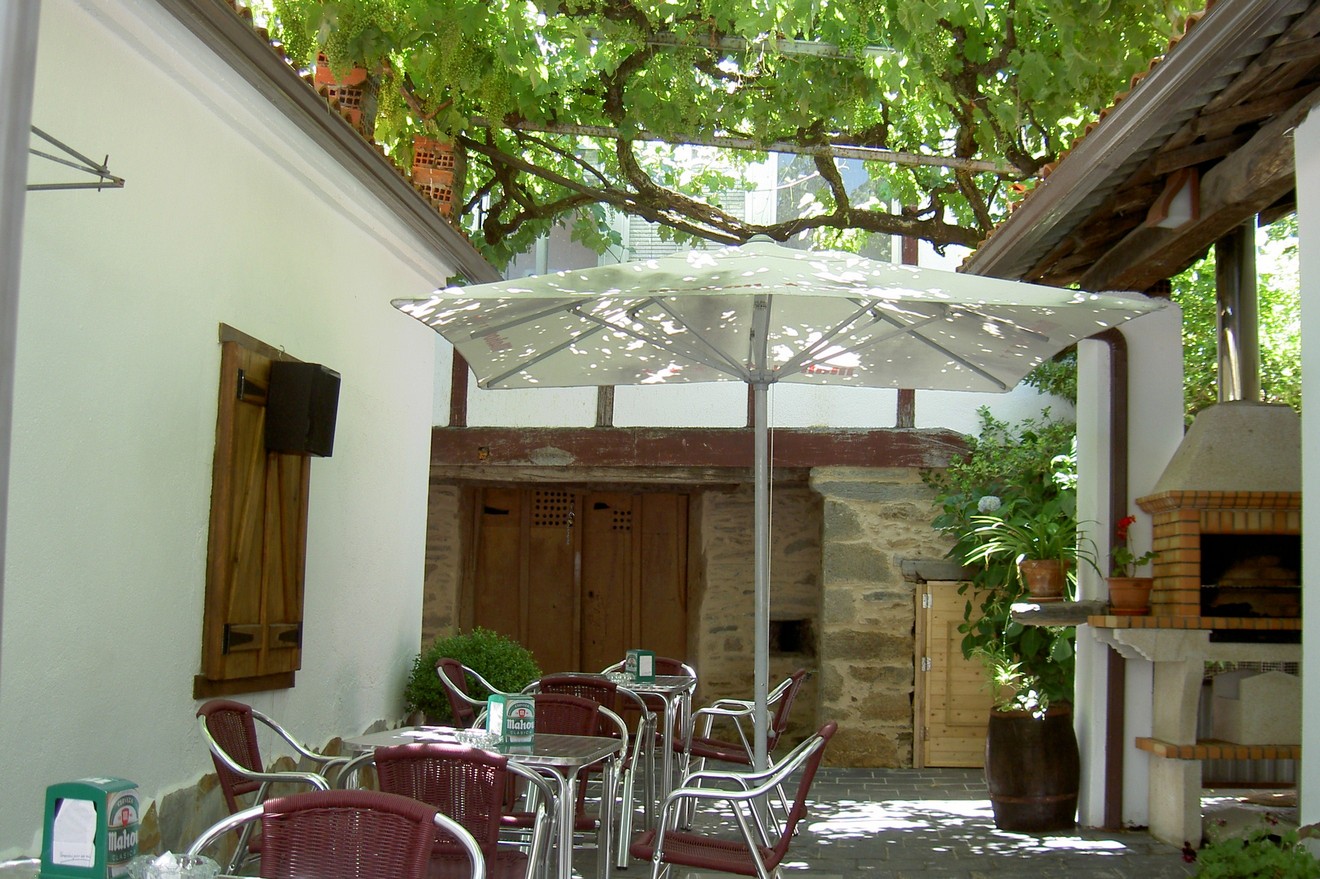
We ordered a bottle of the region’s finest and una tabla (a selection of cured meats and cheese). The barman proudly announced that the chorizo was homemade: a real treat and a sure indication that the ham would be home-cured too.
The tabla arrived; lomo, salchichon, cheese, and best of all delicious homemade chorizo, and melt-in-the-mouth home-cured jamon. We washed it down with one of my favourite white wines of the area, Val da Lenda: a fruity and slightly acidic wine made from 100% godello grapes.
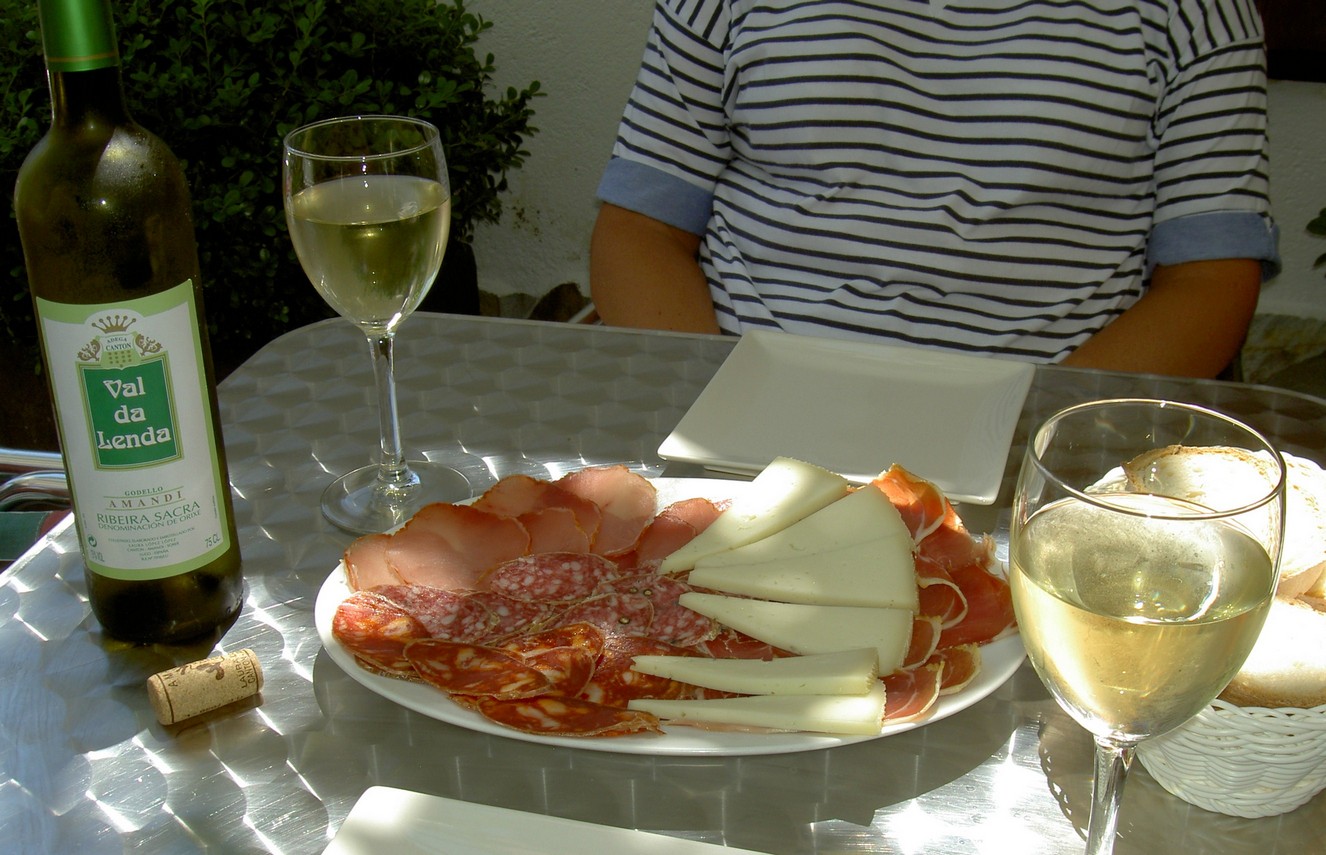
It felt good to revisit an old friend and discover a new one. Rest assured, we’ll be back before another twelve years have elapsed.
I rarely ask questions but I’m curious to know, if you had to choose one place in the whole of Spain that I should visit before I die where would it be?
Vine Watch – week 15
What a glorious week of sunshine; exactly what my little green pearls needed. I spent the week working in the vineyard moving from vine to vine. It’s tiresome work but important to ensure that the young bunches of grapes are hanging free. I still have some way to go but there’s no real hurry.
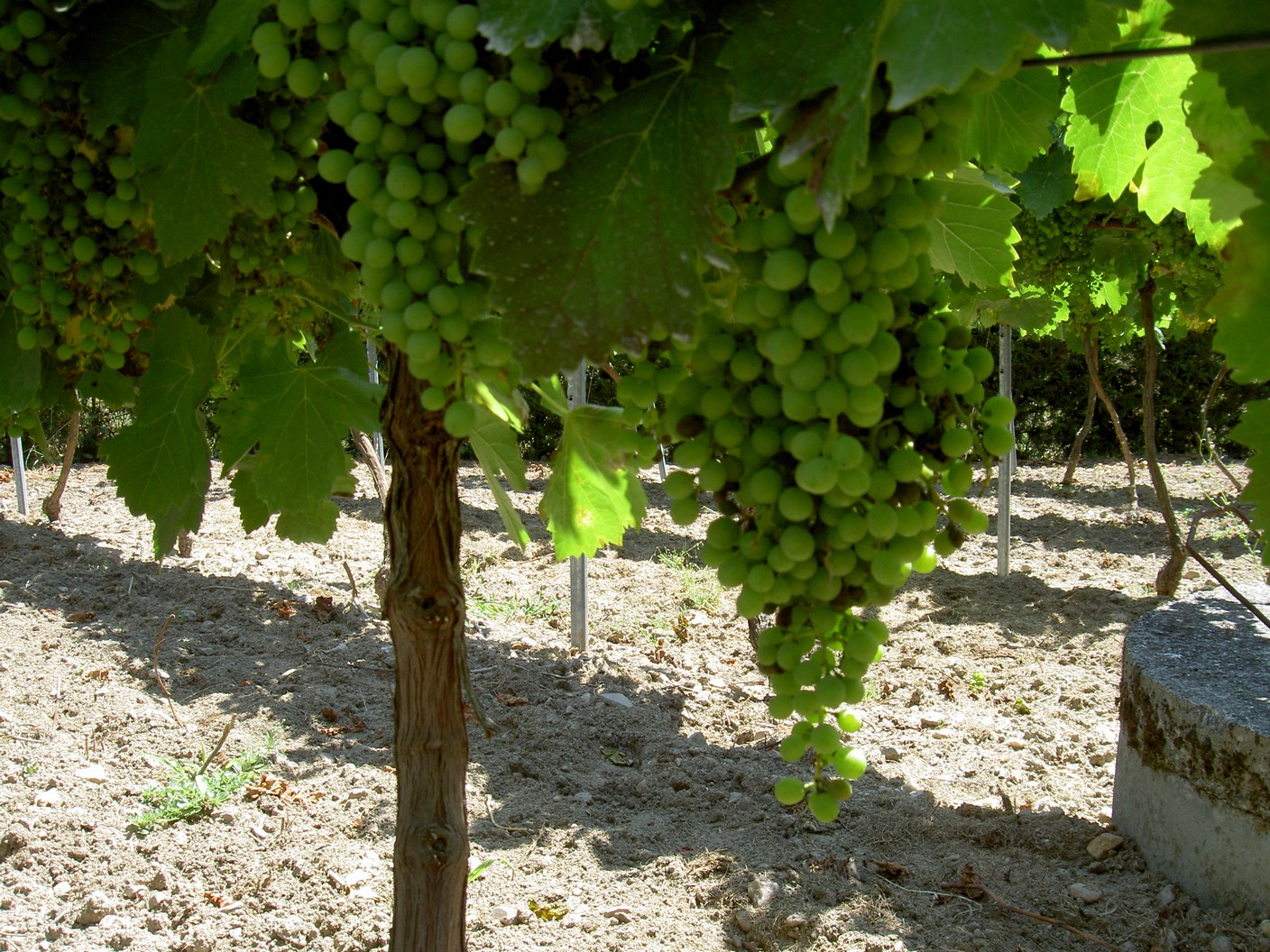
Copyright © 2014 Craig Briggs
*************************************************************************
Craig and Melanie own and operate a luxury farmhouse rental property called Campo Verde. To find out more about a stay at Campo Verde and Galicia in general, visit their website getaway-galicia
Craig’s book, Journey To A Dream, is available exclusively from Amazon, to purchase your copy click here for your national Amazon store.
Find out more about Craig, and Galicia or look him up on Facebook
 0
Like
Published at 11:48 AM Comments (0)
0
Like
Published at 11:48 AM Comments (0)
Ribadavia – Strolling through the passageways of time
Wednesday, July 9, 2014
Without doubt, Ribadavia is a sparkling jewel in Galicia’s historic crown. In 1063 King Garcia chose Ribadavia as the capital of the kingdom of Galicia. That particular honour has long since passed to another. Today, however; the town holds a new title: capital of the Ribeiro wine growing region.
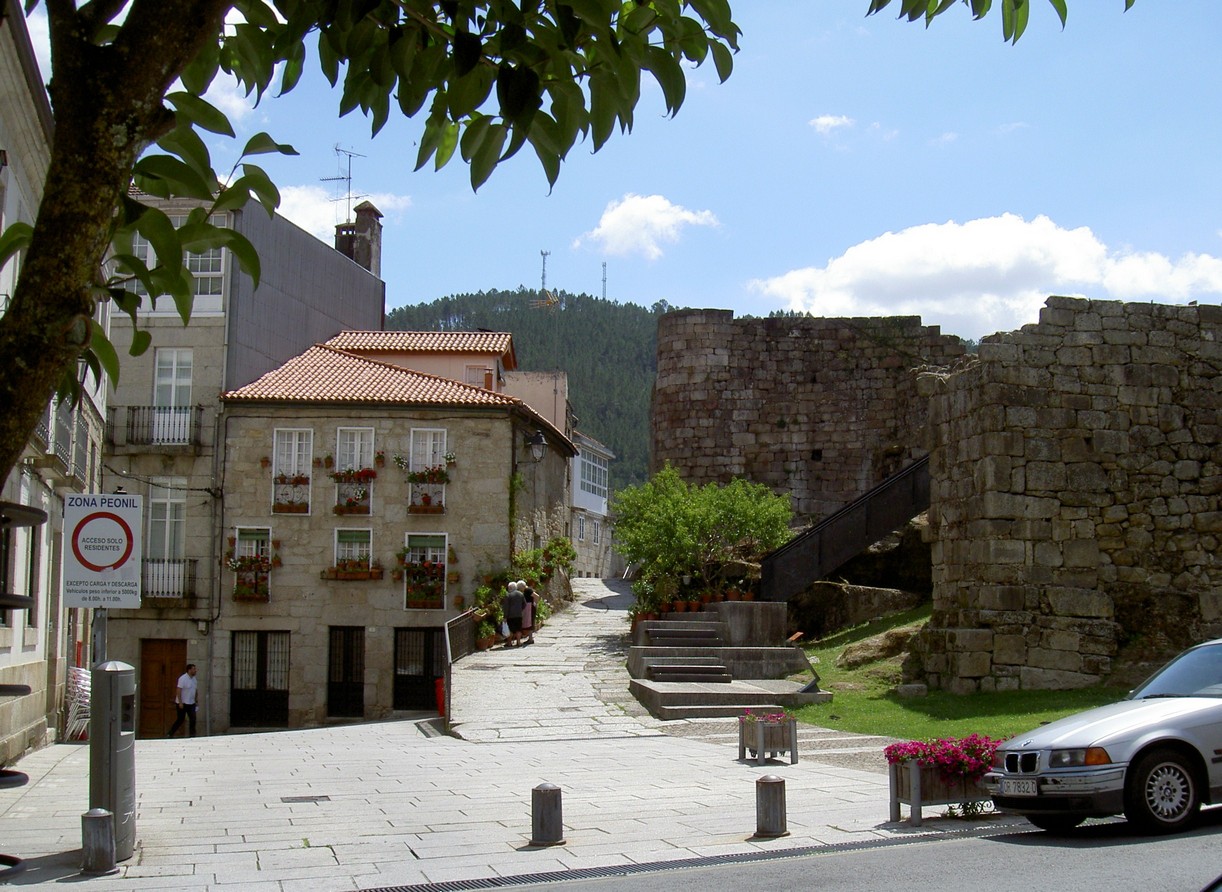
We entered the town from the direction of Ourense, travelling along the Autovia das Rias Baixas (A52). Having left the highway we made our way along minor roads into the heart of the town. Before long, the ruins of the castle of the Counts of Ribadavia came into view; directly opposite is a car park.
We found our bearings and headed straight for the Praza Maior (Plaza Mayor), in search of the tourist information office. A narrow street, barely wide enough for traffic, turns left; then right before opening out into the main square.
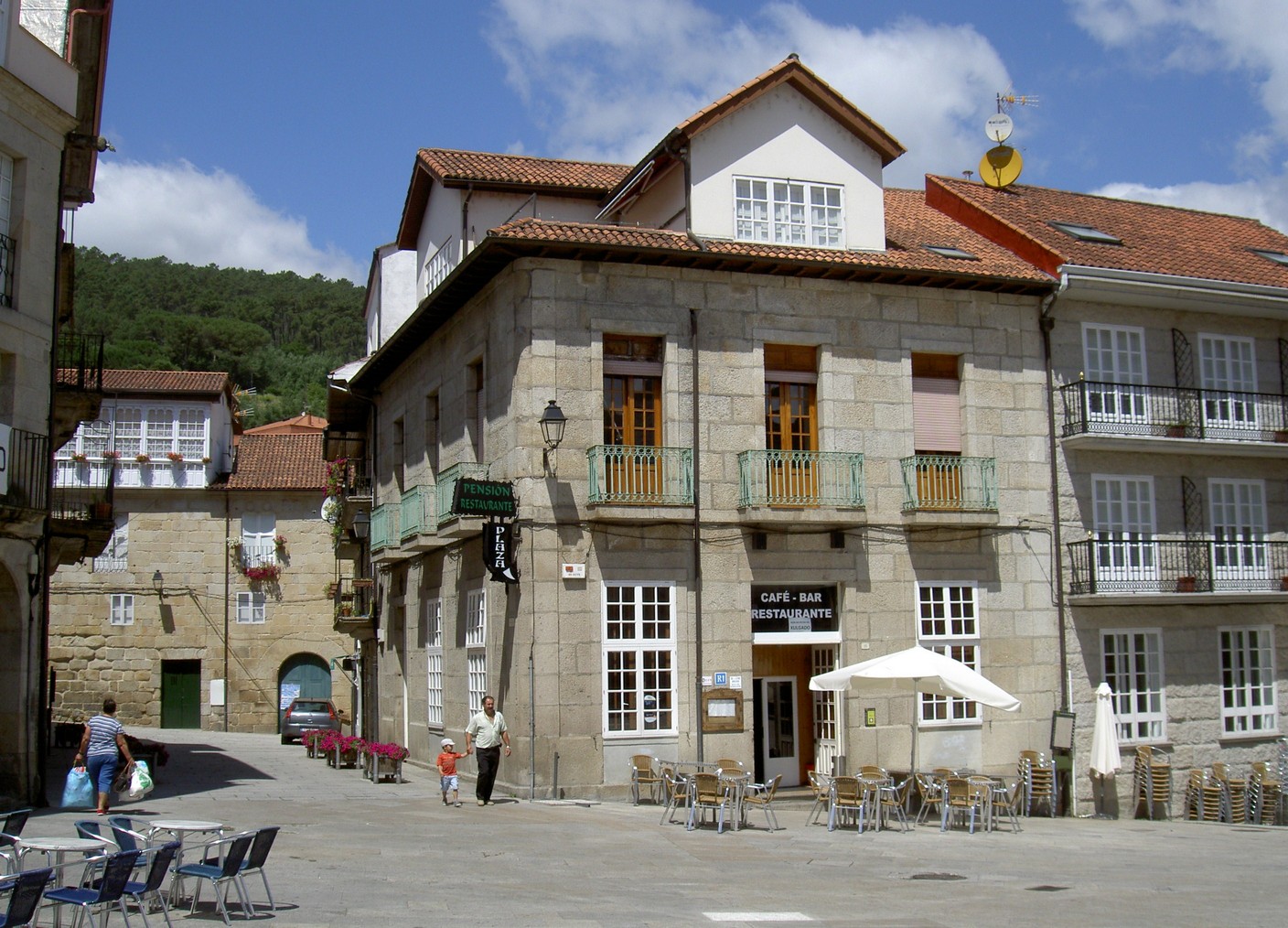
The tourist information office is housed in a 17th century pazo (manor house) in the north eastern corner of the square. This baroque pazo was home to the Sarmiento family, Counts of Ribadavia. An honour bestowed on them by the monarchy in 1476 in recognition of their support during the Reconquista; in particular during the siege of the last Moorish stronghold, Granada.
Directly opposite the tourist office stands the 16th century town hall and bell tower. The town hall has a 19th century façade but the original bell tower, built between 1545 and 1555, stands to this day. What I found particularly interesting was the accuracy of the 300 year old sundial situated just below the modern clock.
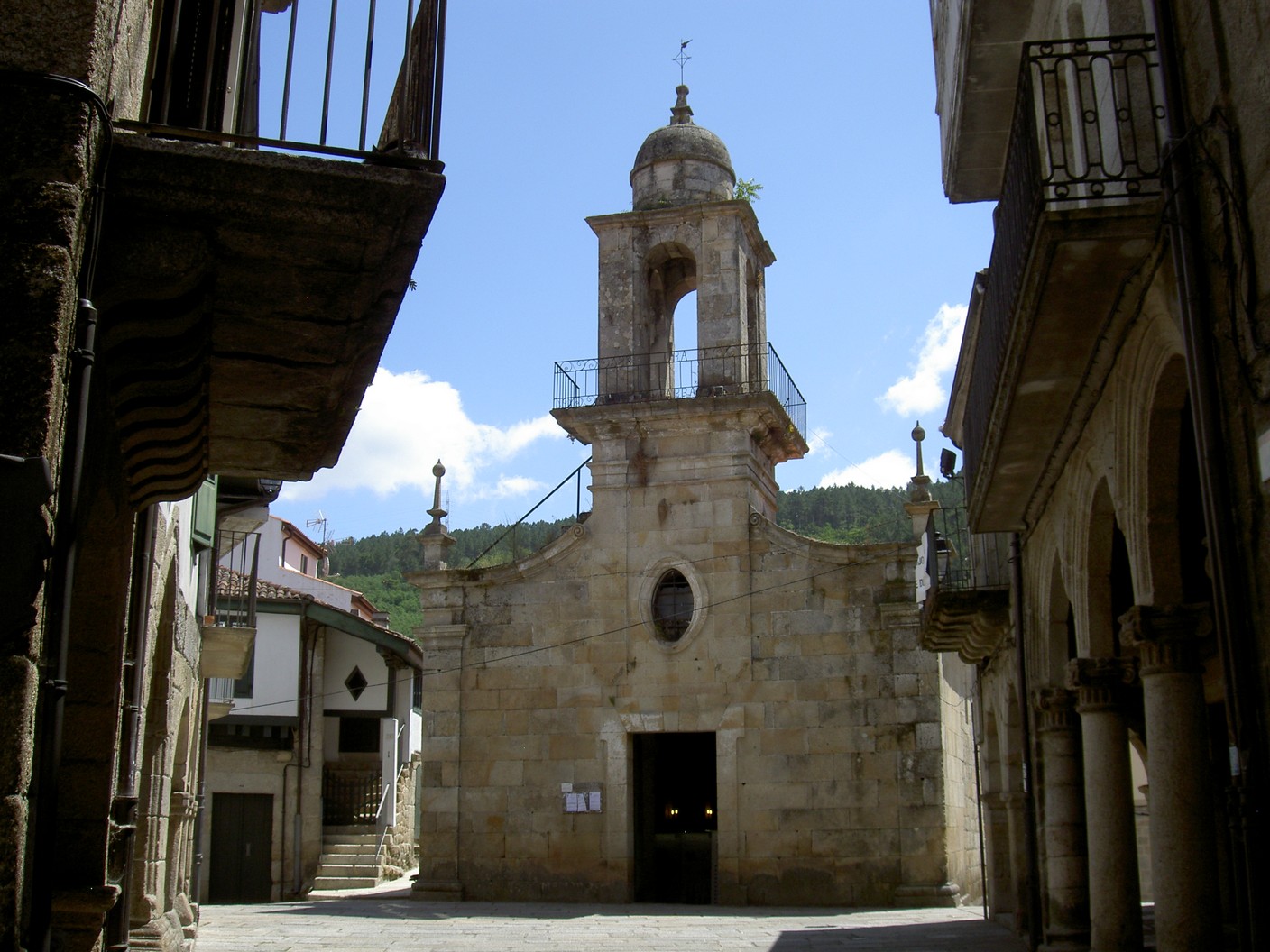
Grasping our newly acquired tourist map, we began our self-guided tour. One of the advantages of exploring Ribadavia is its size. With the exception of the church and convent of St. Francis, all its historic landmarks are within a stones throw of each other.
Within two minutes we were approaching the tiny square of Plaza de la Magdalena and the church of St. Mary Magdalene (Iglesia de Santa Mª Magdalena). Our route took us along narrow streets lined either side with medieval porticos.
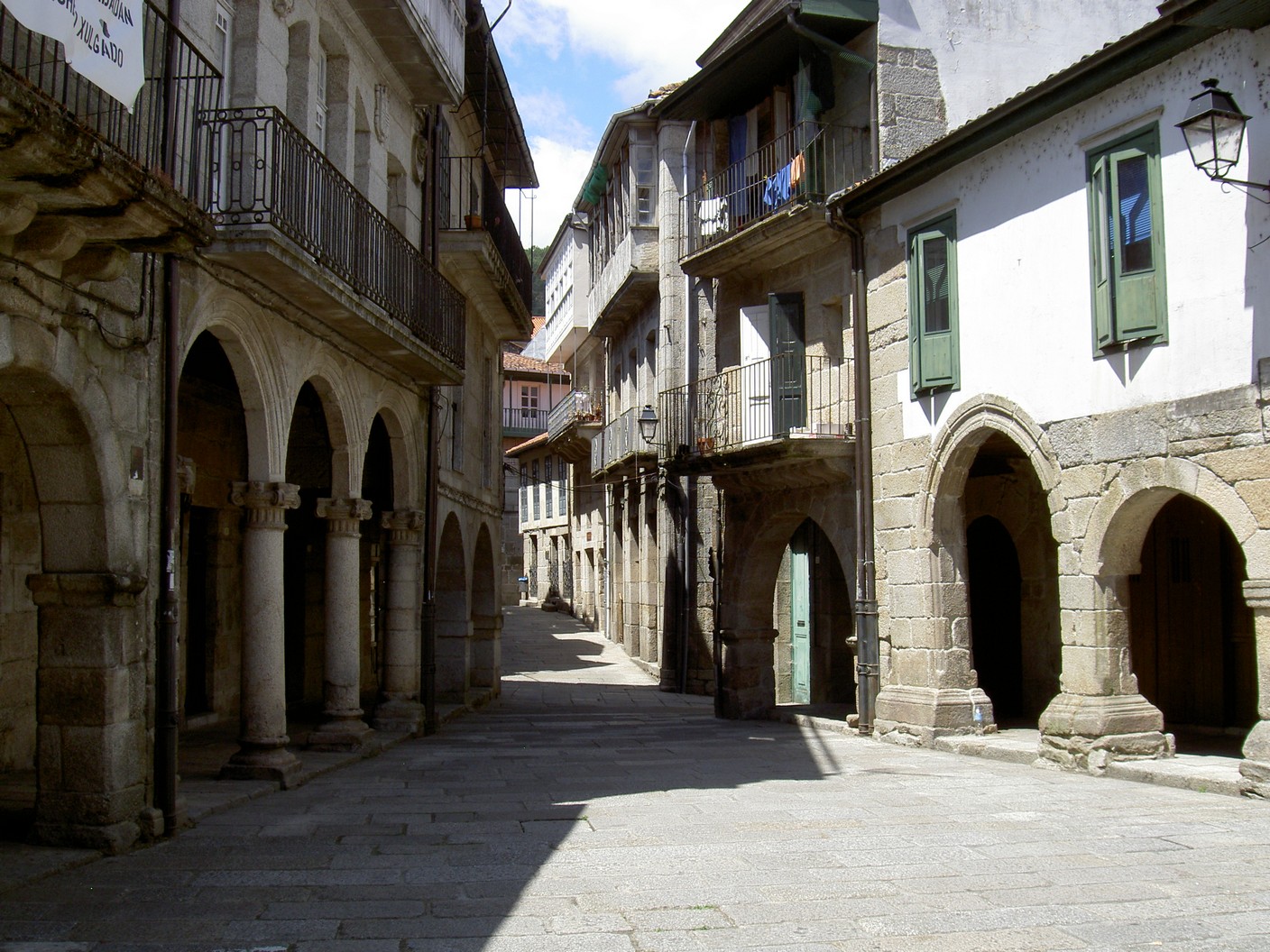
From here we strolled along Porta Nova de Abaixo, part of the old Jewish quarter. It’s believed that Jews settled in the area in the 11th century and specialised in the wine trade. This charming lane leads to Porta Nova, one of the three remaining 12th century castle gates.
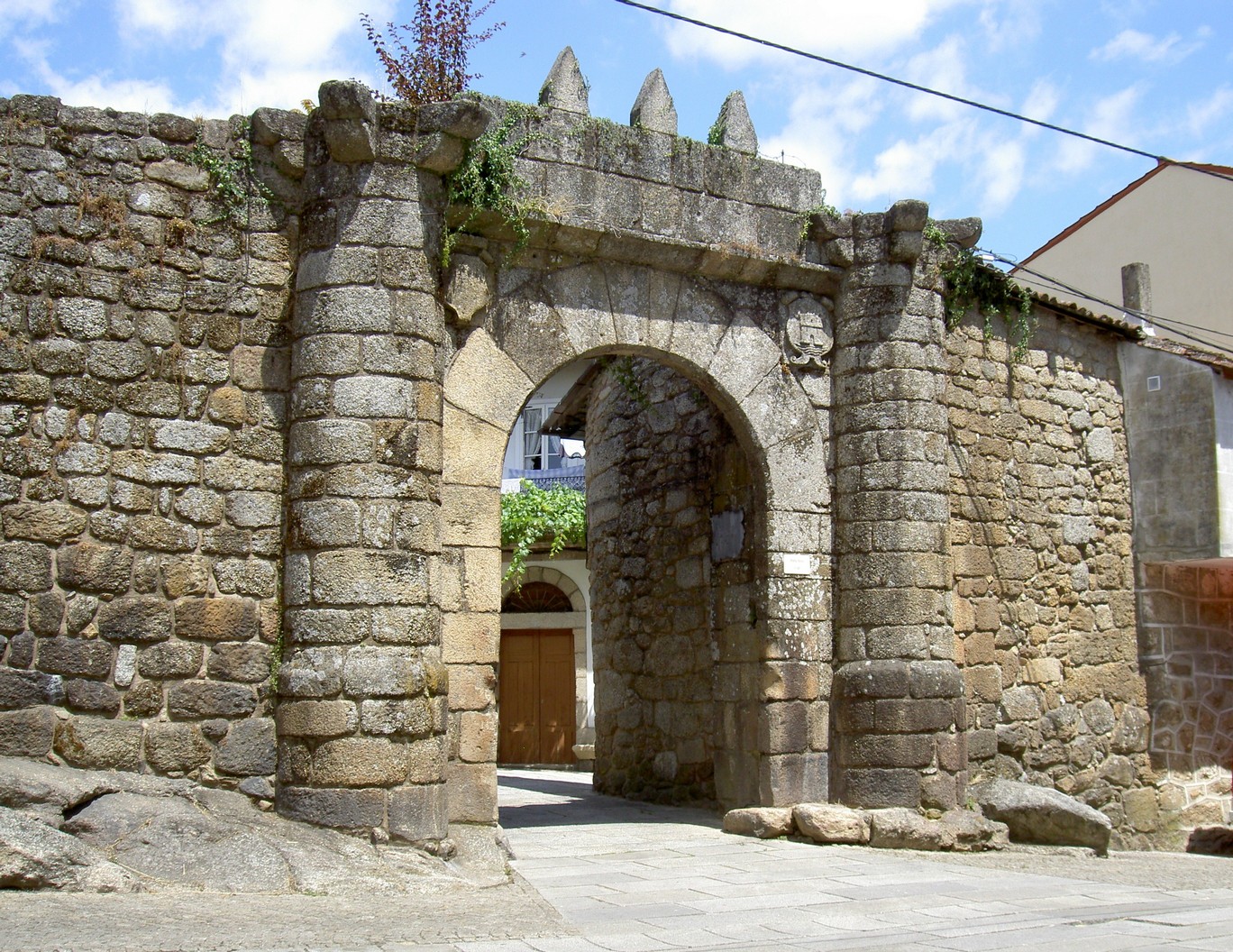
By now we’d built up quite an appetite. We headed back to Plaza Maior and the Restaurante Vinoteca Ribadavia (Praza Maior 10, Ribadavia, +34 905551721). Their menu of the day (menu del dia) is a three course lunch with a bottle of wine, water, and coffee for a fixed price of ten euros per head – outstanding value. The wine, Castro Rei, was crisp, light, and fresh: typical of the wonderful Ribeiro white wines produced in the area.
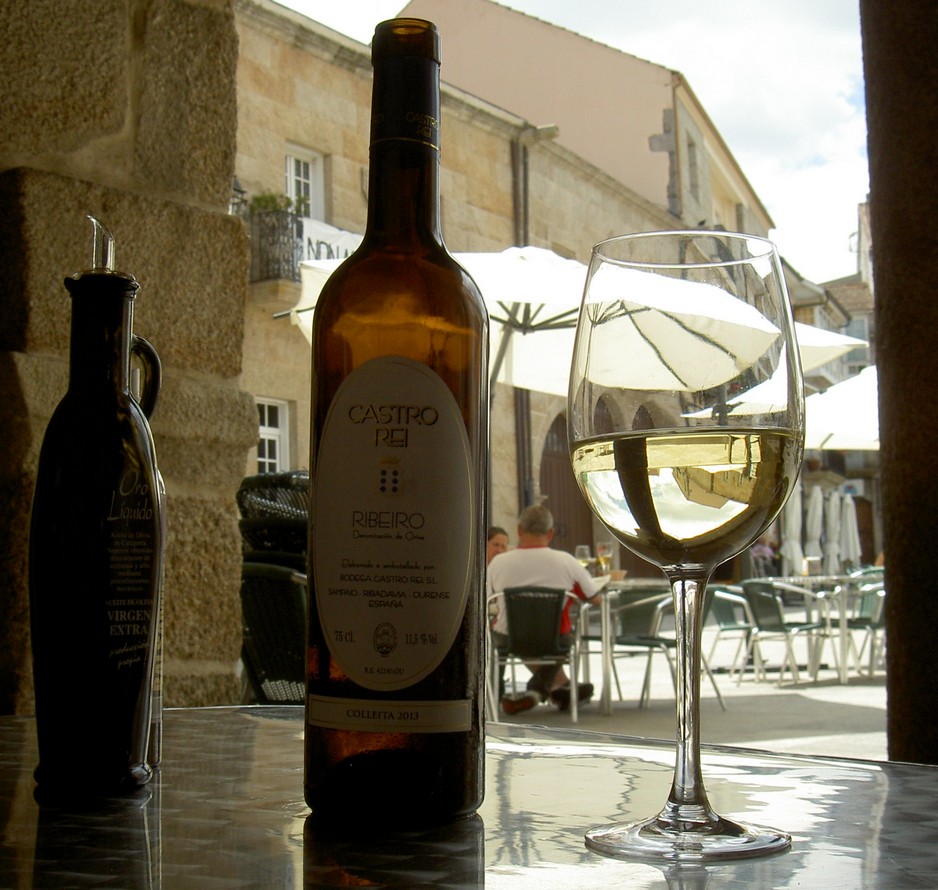
After lunch our exploration continued. I was particularly keen to see the House of the Inquisition. En route we passed the 12th century church of St. James (Iglesia de Santiago). Built in the Romanesque design, it features an impressive 24 paned rose window.
From here we strolled to the viewing point overlooking the river Avia. On the far bank sits the 17th century church and convent of St. Francis (San Francisco). Also visible from here is the Eiffel-style, iron railway bridge connecting Vigo at the coast with the inland city of Ourense.
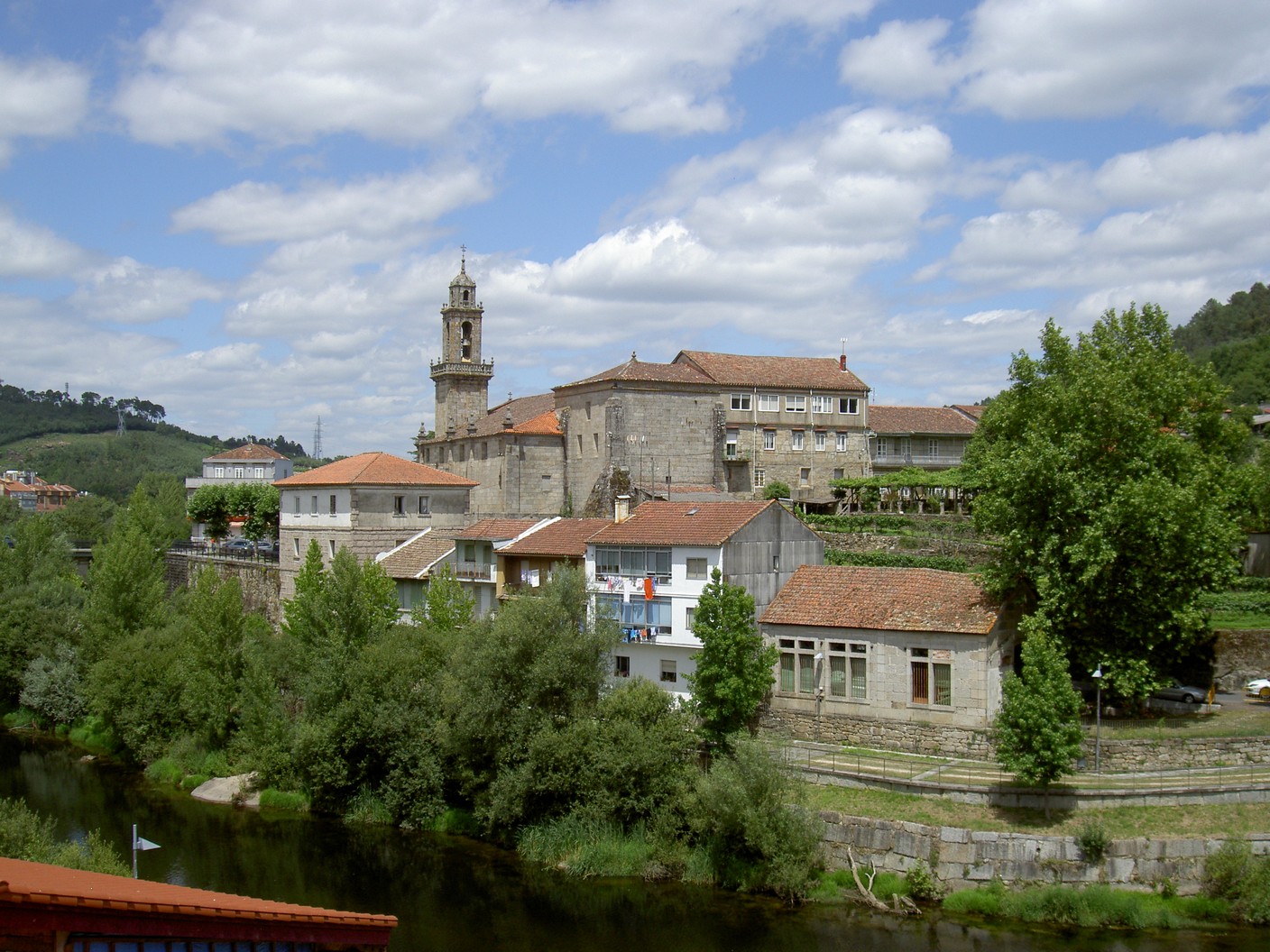
Next stop on our tour was the 16th century House of the Inquisition. Lord only knows what went on behind these closed doors. This house was the office of the Holy See charged with overseeing the execution of catholic doctrine.
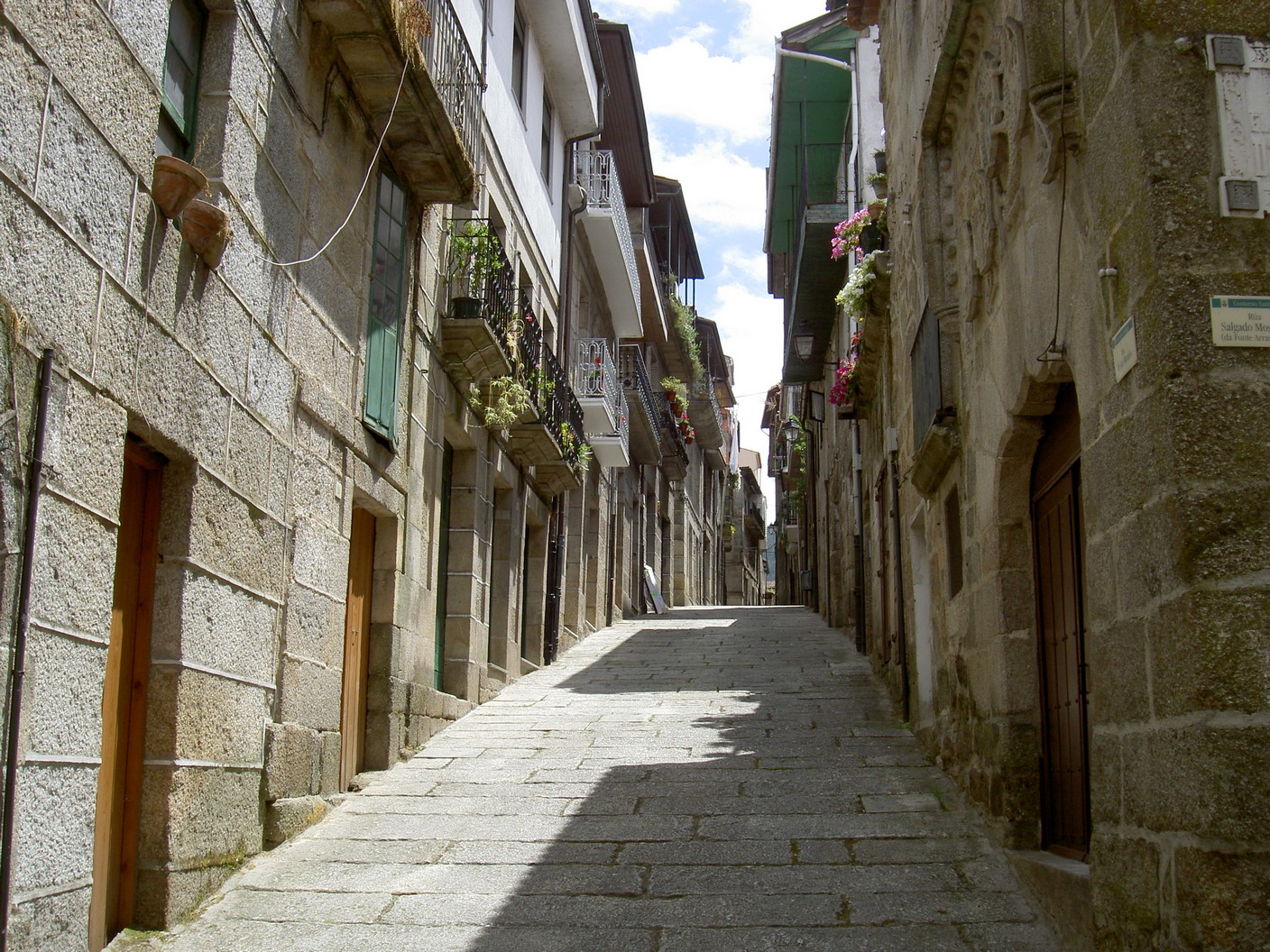
More narrow streets and medieval porticos took us to the 12th century church of St. John (Iglesia de San Juan). The church belonged to the Order of the Knights of St. John. In 1213 the order established a hostel in the town, providing medical and military aid to pilgrims travelling the Camino de Portuguese from Braga in Portugal to the tomb of St. James in Santiago de Compostela.
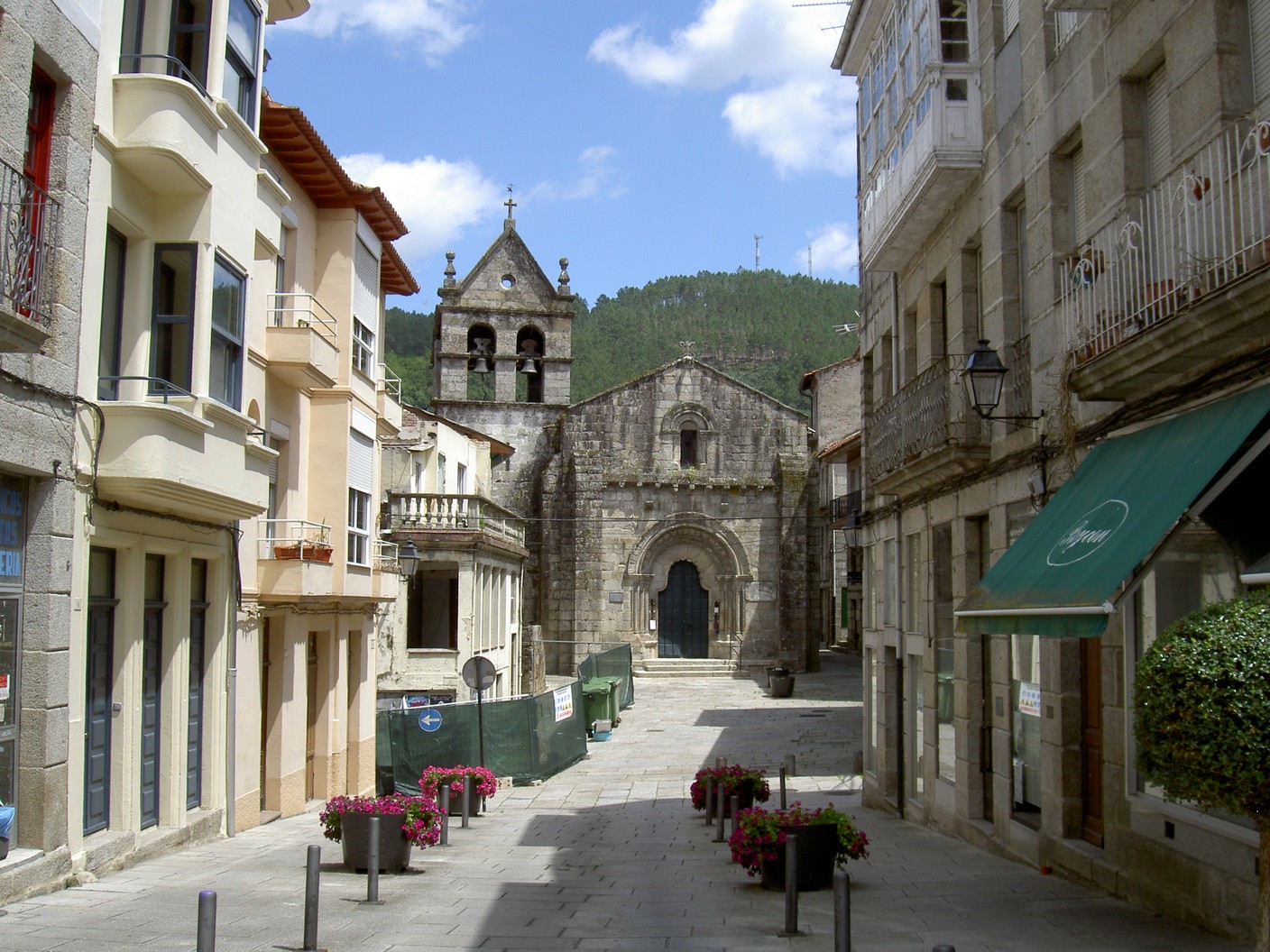
By now we’d come full circle. Just outside the historic centre is the 17th century church of our Lady of the Portal (Iglesia de Ntra. Señora del Portal) and the 13th and 14th century church and convent of St. Dominic (Sto. Domingo). The latter represents one of the best examples of Gothic architecture in the area.
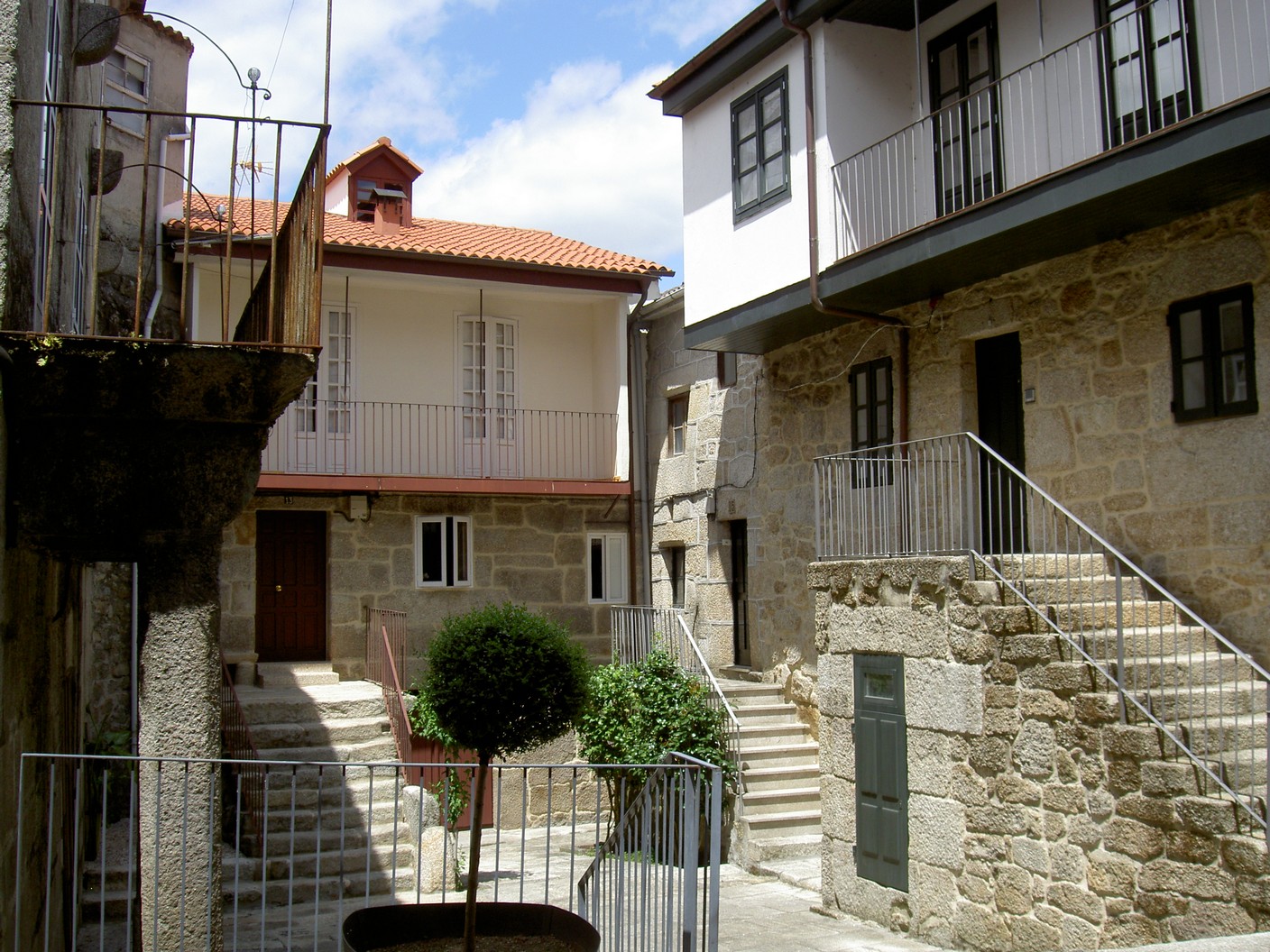
One location not in the tourist guide but in my opinion well worth a visit is the town cemetery located opposite the church of St. Dominic. The high walls and gated entrance are quite imposing but once inside the spectacular forested scenery of the Miño valley seems to merge harmoniously with the tombs and headstones of the town’s dear departed.

Any visit to Galicia would not be complete without taking a stroll around this enchanting and historic town. I for one can’t wait to return.
Follow this link to watch a short video of Ribadavia – Strolling through the passageways of time.
Vine Watch – week 14
Last week’s showers sparked an explosion of weeds in the vineyard. In a month’s time, this would be good news: a covering of weeds helps manage the growth of vine foliage. Until then, they are most unwelcome. I had hoped to be finished with the rotavator for this year but it wasn’t to be.
Despite signs of mildew on some vines, this year’s crop is developing well. Pea-green is slowly changing to red as the young fruits mature. It’s time to ensure that the young bunches of grapes are hanging loose below the foliage. This allows good air circulation and unrestricted development.

Copyright © 2014 Craig Briggs
*************************************************************************
Craig and Melanie own and operate a luxury farmhouse rental property called Campo Verde. To find out more about a stay at Campo Verde and Galicia in general, visit their website getaway-galicia
Craig’s book, Journey To A Dream, is available exclusively from Amazon, to purchase your copy click here for your national Amazon store.
Find out more about Craig, and Galicia or look him up on Facebook
 0
Like
Published at 11:00 AM Comments (6)
0
Like
Published at 11:00 AM Comments (6)
Not Quite Glastonbury
Wednesday, July 2, 2014
About a month ago, the local council in Sober informed us of a forthcoming concert. The outdoor performance would take place in the Praza do Concello on Saturday the 28th of June starting at 22:00. To my surprise, the announcement was made on the council’s Facebook page.
Reading the post shocked me to the core. It wasn’t the fact that the council had organised a concert; these types of events occur quite regularly at this time of year, or that they’d chosen social media to trumpet the news: although that in itself was extremely unusual. No, what really stunned me was the timeframe.
Giving us a month’s notice of an upcoming event is unheard of. We usually hear about these things the previous day. A photocopied leaflet, on either bright-pink or deep-blue copier paper, is hand-delivered by our local community post-lady. Announcing the event a month in advance was nothing short of a miracle.
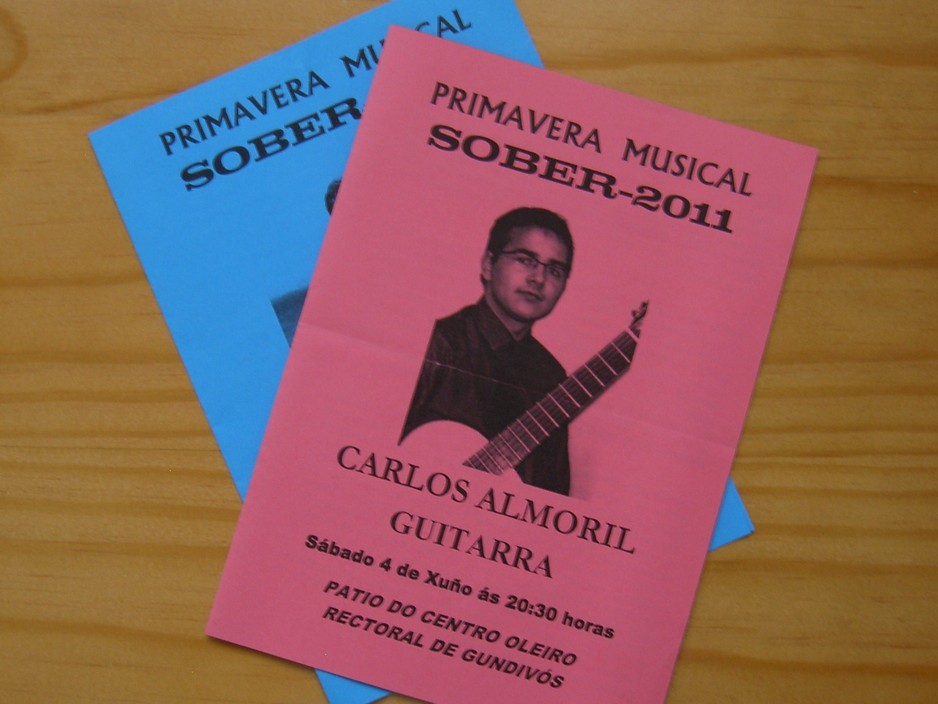
A quick internet search provided the explanation. The event was no ordinary concert, no fiesta-circuit orchestra or local youth band, the players at this event were monsters of rock; legends in their own lifetime. The fact that I hadn’t heard of them was neither here nor there.
The rock legends in question were the four piece band Sôber. That’s right, Sôber were playing in Sober.
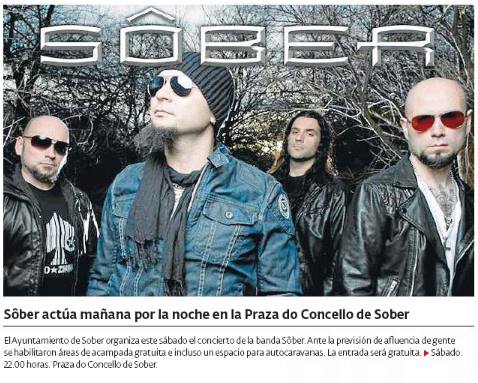
The band was formed in 1993 and went on to release five albums before splitting in 2004. At the start of 2010, they regrouped and released a further two albums. Their most successful, Paradysso released in 2002, went platinum.
The mayor of Sober, Luis Fernandez Guitan, had certainly pulled one out of the hat this time. Before being elected he would regularly arrange concerts: the classical Spanish guitar player in the courtyard of the Gundivos pottery, to name but one. His tactic of bringing music to the people might well have got him elected.
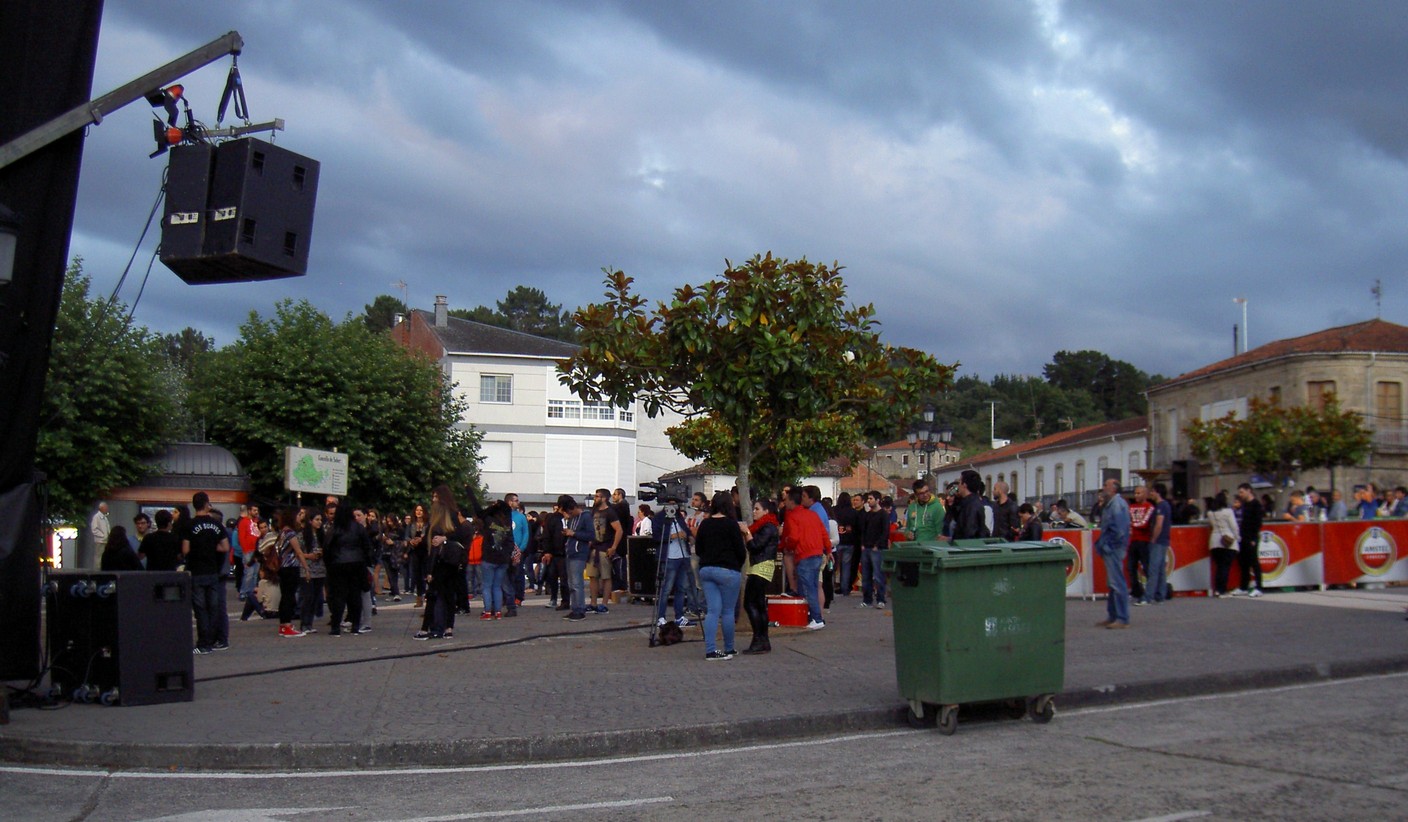
On the evening of the concert we strolled up the lane to Sober. The stage had been erected on one side of the square, adjacent to the town hall. A crowd of several hundred people had gathered directly in front. The central part of the square was occupied by an enormous four-sided bar. It seemed ironic that a group who actively preach sobriety should have one of the biggest bars I’d ever seen; slap-bang in the middle of the audience. Melanie and I wandered to the back of the crowd to get a clear view of the stage.
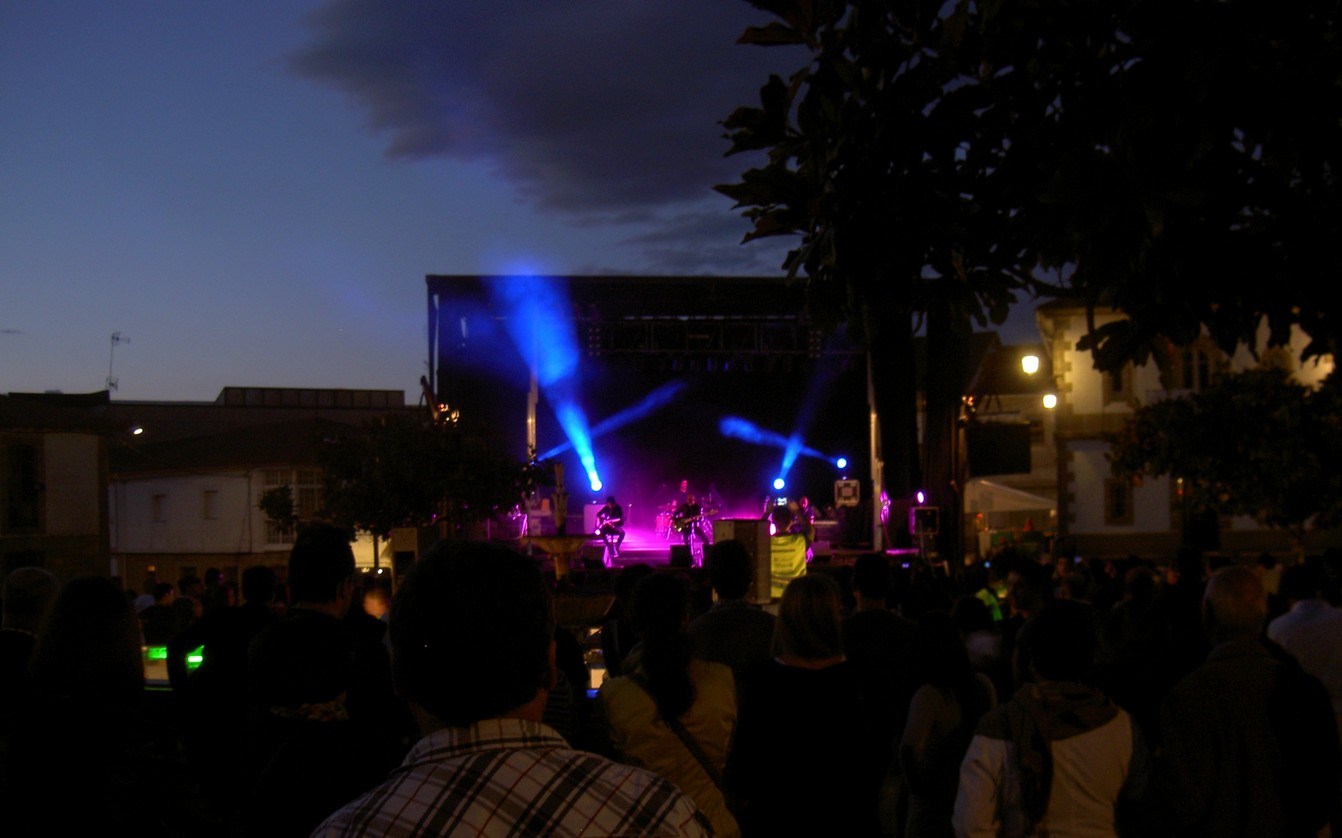
The concert was quite a low-key affair. The three front men spent the whole show sitting on bar stools, plucking their instruments and blasting out the lyrics. The crowd revelled in the familiarity of the play-list.
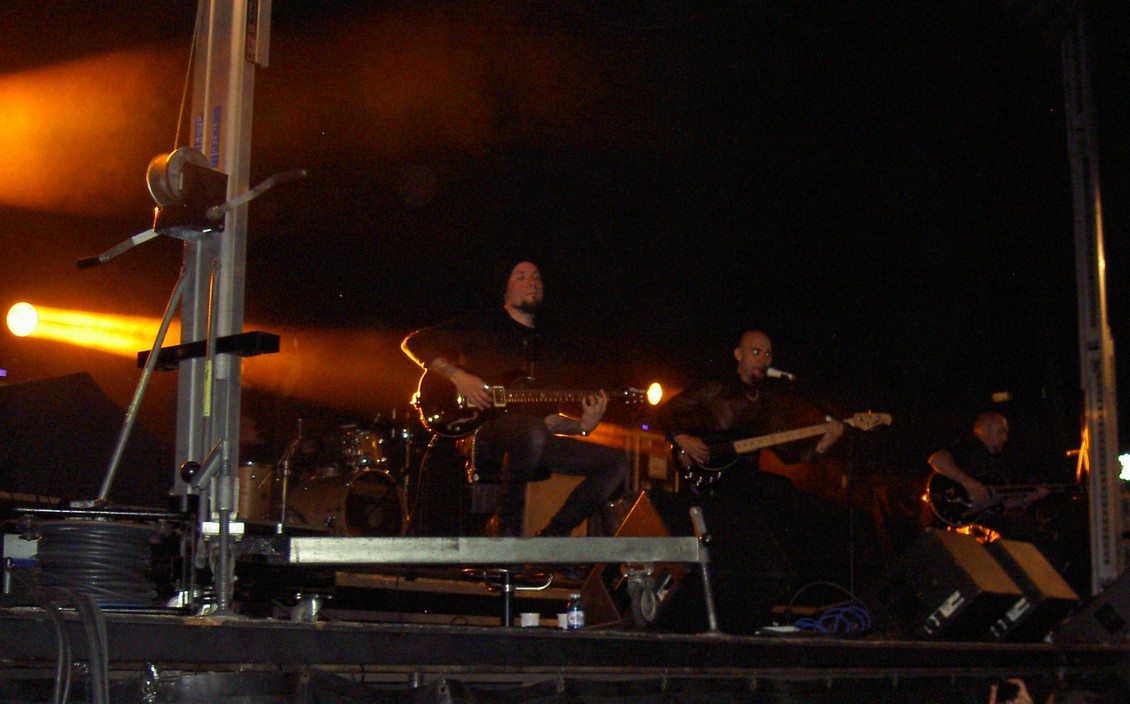
All in all we had a good night. It wasn’t quite Glastonbury but if the opportunity ever arose, we wouldn’t hesitate to go see them again.
Vine Watch – week 13
Unlucky for some. On the thirteenth week of my vine watch report, I have some bad news to relay. In the last few days we have had a number of showers, some being quite heavy. As a consequence, a few of the vines are showing signs of mildew. At this stage it’s not a major problem. The number of infected vines is small and of those, the fungal growth is very light.
Although scientific studies have shown that the presence of mildew has no effect on the quality or taste of the finished wine, if the infected number of vines remains low, I will not be adding these fruits to the harvest.
Keep your fingers crossed.
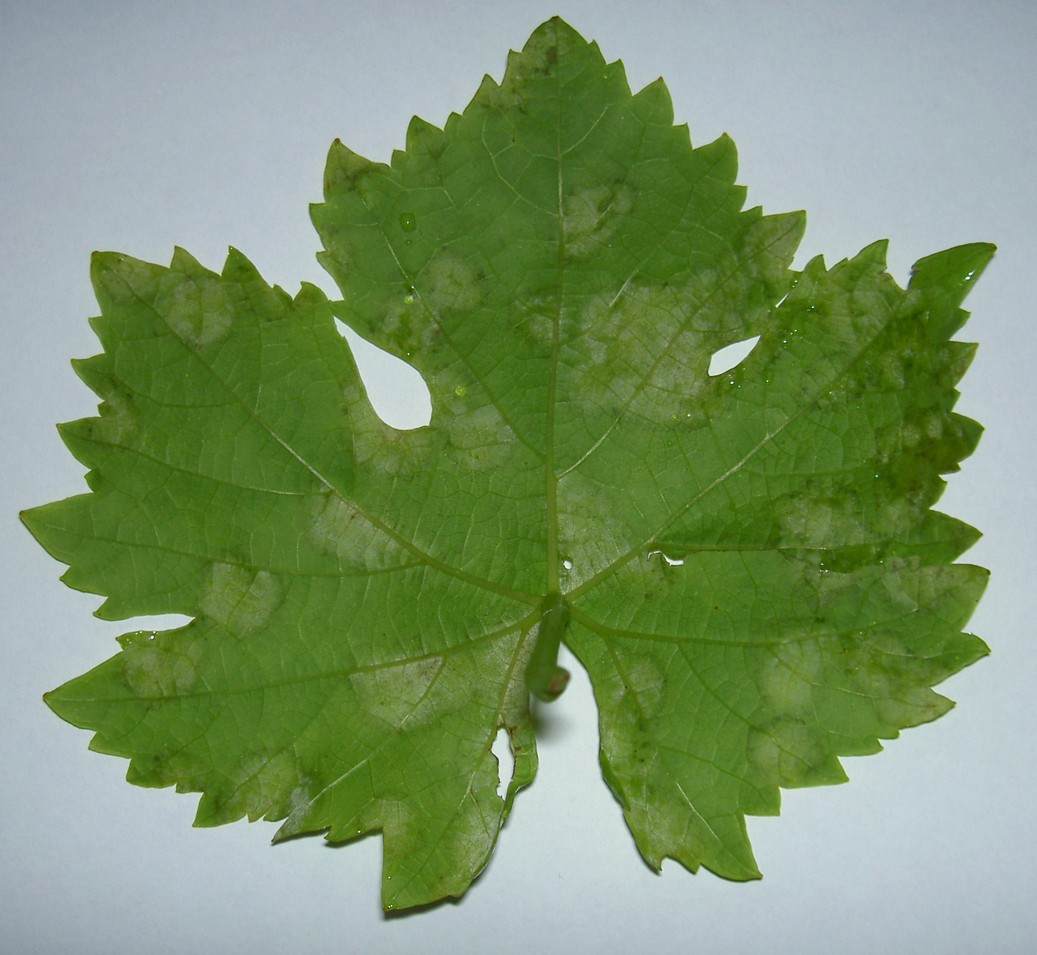
Copyright © 2014 Craig Briggs
*************************************************************************
Craig and Melanie own and operate a luxury farmhouse rental property called Campo Verde. To find out more about a stay at Campo Verde and Galicia in general, visit their website getaway-galicia
Craig’s book, Journey To A Dream, is available exclusively from Amazon, to purchase your copy click here for your national Amazon store.
Find out more about Craig, and Galicia or look him up on Facebook
 0
Like
Published at 11:22 AM Comments (0)
0
Like
Published at 11:22 AM Comments (0)
Spam post or Abuse? Please let us know
|
|